All successful brokers, real estate websites and brokerage companies began on an equal footing with other real estate professionals. These seasoned and exceptional practitioners worked really hard to reach their current position. From the outside, it can appear simple to pull off, right direction practice real estate law, but in truth, it takes years of arduous work and dedication.
They have developed a solid reputation and build relationships among their clients and coworkers during those trying times in their employment. It will eventually be their turn to share their story and encourage others to aim high and accomplish more.
From Manifesting to Living the Dream, Motivational Push for Property Sellers
When things are tough, you are the first person you will turn to for support. Therefore, it’s critical to be thought of as a trustworthy, committed, and accountable individual. Setbacks in your career are common in real estate current market, and they often teach you cash offer you valuable insights that you may share with other real estate agents.
You need to be committed, enjoy what you’re doing, and be enthusiastic about it, whether you work in the real estate business or sales or another area; you also need to have faith in God and in yourself.
Honoring the Real Estate Work Through Motivational Push for Property Sellers
To build a brokerage company from the ground up, the owner and entire team must have the same goals for success. You must work with honesty and ensure that everything you do is of the highest caliber—regardless of whether you are handling client or investor relations, media-related tasks, or closing a sale or rental property sale.
Technology must be used by brokerage firms to sell properties. But not all tasks ought to be automated. In order to effectively communicate with clients, generate ideas, and overcome obstacles at work, the human touch is still necessary. Learn what can be handled by technology and know what to assign to your fellow brokers.

Starting the Green Initiative with Yourself
In the real estate sector, it’s crucial to live what you preach. Selling sustainable projects and properties to property owners other investors requires you to follow environmental laws, zoning violations and regulations in addition to your job responsibilities in real estate law.
Your Income Potential is Limitless
You can make an infinite income, choose your own working hours, and have complete personal independence as a real estate agent rental property owner, absentee owner, investor and salesperson. You have to wake up every day without a job as a price for that freedom.
Real Estate is a 45 Day Cycle
When you put effort into real estate investing and sales with other property owners and investors but don’t see results, you have to get up every day and put more effort into it.
It is very simple to lose motivation and skip a day, but the decisions you make today will have an impact on your future. If you skip today, you won’t eat for 45 days.
You Need a Plan
It’s essential to have a strategy in place if you want to grow your clientele and market your business continuously, but it’s simple to become overwhelmed by a lengthy, intricate procedure.
“In difficult market situations, motivating your customers and sellers becomes a crucial ability. Have you got it?”
Customers are drawn to practice real estate and property and law by agents who “Know things they don’t know” and who exhibit exceptional competence in the way they carry out their role. As a result, these customers respect and trust these agents because they project an air of authority.
Therefore, consider what information you are offering with your marketing message to your clients that can encourage them potentially motivated sellers to decide to sell now rather than later. Do you have a strong argument for why local consumers should buy right now or why sellers should move quickly?

The Motivation Game: Motivational Push for Property Sellers
Gaining reward and preventing loss are the two main reasons why people do things. To get a reward, we might eat somewhere new. We only purchase insurance to prevent loss.
Studies have repeatedly shown that people are much more motivated to prevent loss than to obtain something. Consider the consequences of not purchasing or selling in today’s real estate market in your community right now or in the near future, and make sure customers are aware of them. Are price increases or a rise in consumer demand anticipated? Will there be a lot of buyers? Will there be a smaller or larger selection of properties as time goes on? Will there be a rise in price reduction or in supply as investment landlords unload their properties?
A crucial ability is “disturbing” your client to take action. Keep in mind that every consumer has experienced a property type of difficulty that caused them to consider moving. The difficulty is that some clients’ agents do not adequately inform them of the gravity of the situation they are in.
A common saying in digital world of sales is that “Emotion creates motion”; in other words, people move to sell quickly when there is an underlying emotion.
Home movers take action to accomplish a goal and/or to avoid a punishment; for instance, people move because they want to provide a better lifestyle and/or safer environment for their children, or they are motivated to sell an inherited property because they fear losing money. House buyers may also want to avoid the inconvenience of missing their grandchildren’s growing up or staying next to noisy neighbors, as well as to be closer to their place of employment or a sick relative.
The market will finest real estate investor and agents understand that they must be salespeople rather than only information providers. Some property agents will survive and grow while others fall short due to their ability to motivate and irritate customers and clients.

Fun and Easy Ways to Get Motivated in Your Real Estate Career: Motivational Push for Property Sellers
1. Pick something you believe in
Find something more important to you than money so that you can be highly motivated to sell it by internal forces and be led with purpose. You have a lot higher probability of success if you don’t have to force yourself to accomplish something you don’t believe in.
2. Visualize success
Make a wall calendar and mark a huge X next to each day you made progress toward your objective. Once you begin an X chain, it will be challenging to break the chain by skipping a day. You can stay inspired thanks to the images.
3. Surround yourself with successful people
Join a group or offer your services to a board or organization filled with driven, like-minded individuals. You’ll catch the optimistic attitude and beneficial practices.
4. Limit your time on social media
Observing other people and their successes can either inspire you or leave you feeling self-conscious. Make use of the inspiration as a catalyst for action. Stay away entirely if you start to feel self-conscious or envious. It does you no good. In either case, try to limit your time on the platforms and instead invest more time in achieving your objectives.
5. Have an accountability partner
You will pay a larger immediate price for being lazy if you have someone to answer to and who will give you hell if you don’t do what you said you would.
Final thoughts
Too maintain your motivation in your new job or real estate job, adhere to the easy actions listed above. They are enjoyable and healthy. Follow your instincts and pay attention to how your energy changes.
Continue pursuing the things that make you feel happy and optimistic so that your dreams might flourish.

Stay Motivated with Brittany!
The luxury living experience single family homes that consumers have always desired must include a serious owner and motivated seller. A comfortable, enjoyable, and healthy lifestyle must be pursued when residing in a community. The best luxury real estate developer in the nation, Brittany Corporation, can meet this need. Some of the most stunning homes in the Philippines on their list of luxury homes are found in breathtaking places.
Build trust and visit Brittany’s official property page to know more about Brittany’s beautiful thematic offerings or follow us on our Linkedin, Facebook, Twitter, and Instagram accounts and contact info.
Suggested Read: Build Better, Safer With Technology Using Tech in Construction
Suggested Read: Summer Selling Success: Insights From Top Real Estate Agents
Suggested Read: Forresta Accessibility Features That Stand Out
Suggested Read: Holiday Season: Best Time To Sell A House
Suggested Read: Passion To Fashion Business
An elegant fence design in your front yard that is durable is ideal to have. Some may prefer existing fences like wood fencing, but because of the tested quality of a new vinyl fence, it’s not surprising that it’s becoming a trend.
Perhaps you also want to start a vinyl fence project and change your existing fence in your front yard but are having second thoughts on the cost of vinyl fence installation. What could be the rate of vinyl fence installation per linear foot, the labor cost of the professional fence installer, the ideal fence height, and the fence style to use?
If that’s the case, here’s some excellent news: you don’t have to search further. Let this article cover all about vinyl fence installation costs for you! Invest your time on more important things, such as seeking out the ideal new home, perhaps one as enchanting as Portofino Heights or Belle Reve—a luxury real estate under Brittany Corporation.
Vinyl fence installation cost per linear foot
If you look at the vinyl fencing cost compared to an old fence like wood fences, the labor costs and overall cost per linear foot are kind of expensive. However, you can save a lot of money in the long run through repairs and maintenance. Not to mention that with all the variety of vinyl fences available, you can choose from rail vinyl fence to vinyl picket fencing that will make your house even more delightful.
But all of these begs the question, how much does vinyl fence installation cost per linear foot? The labor cost for professional vinyl fence installers and materials for vinyl fence installation may differ depending on the location. But generally, the national average cost for vinyl fence installation amounts to $4,300 (₱244,040.05). While in regards to vinyl fence cost per linear foot, vinyl fence ranges ranges from $23 to $29 (₱1,305.33 to ₱1,645.85).
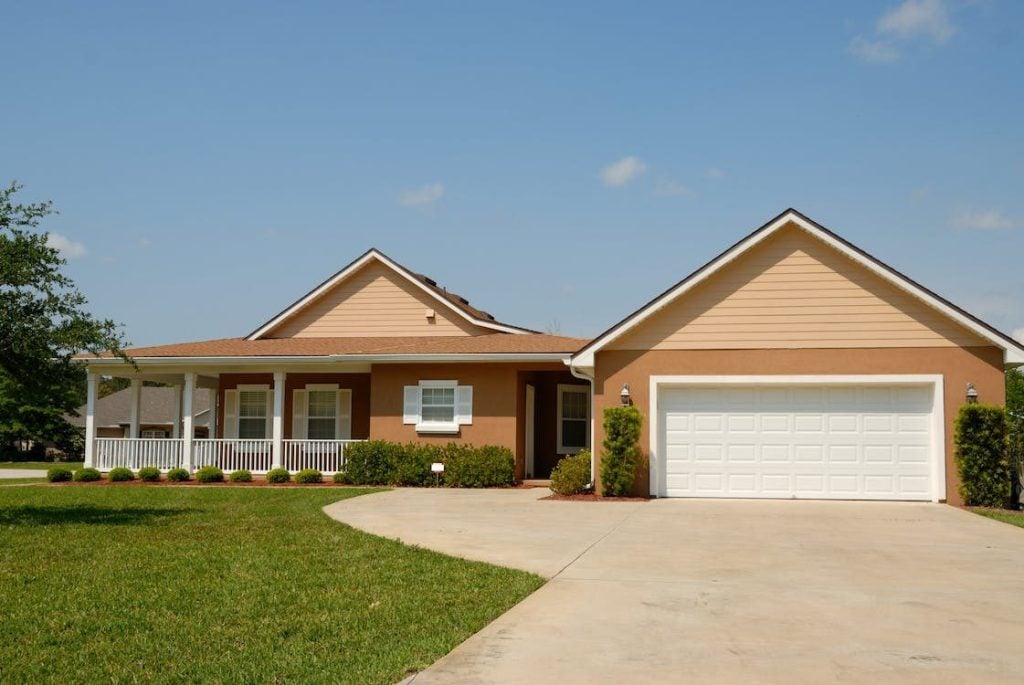
To further elaborate, here’s the breakdown of the cost of vinyl fence installation per linear foot without the use of vinyl fencing cost calculator:
- 4 linear feet – $15 to $25 (₱851.57 to ₱1,419.79)
- 6 linear feet – $25 to $40 (₱1,419.79 to ₱2,271.66)
- 8 linear feet – $30 to $45 (₱1,703.73 to ₱2,555.60)
- 10 linear feet – $35 to $50 (₱1,987.69 to ₱2,839.52)
- 12 linear feet – $40 to $60 (₱2,271.66 to ₱3,407.43)
These vinyl fence costs per linear foot will be worth it because vinyl fence installation can serve aesthetics, security, and even privacy all at the same time. You just need to choose the right style and quality for your vinyl fences. You may even opt for a picket fence, split rail fence, or privacy fence, anything that will give your house the curb appeal to make your place more stunning.
But suppose you think vinyl fence installation is not enough to experience a world-class residential vibe. In that case, you might want to look at Vista Alabang, Belle Reve, and Portofino Heights—a luxury real estate that can always complement the beauty of a vinyl fence or wood fence and be inspired to improve your place.
Vinyl fence cost and type
Generally speaking, aside from labor costs, fence panels, and how many linear feet of vinyl fences, the cost of vinyl fence installation also depends on the fencing materials style. This is a significant factor in the vinyl fence cost because every homeowner has their preferred fence style to be put by the vinyl fence installers.
To give you an insight into what could they be and their cost, here’s the guide below:
Split Rail
Among all the types of vinyl fences, this is the most affordable one. If you want the cheapest vinyl fence yet attractive, then the cost to install a split rail PVC fence might be ideal for your budget. The vinyl fence installation cost of split rail ranges from $13 to $17 per linear foot (₱738.34 to ₱966.20).

Picket Fences
If you prefer a vinyl fence installation with a decorative purpose and can’t choose among the vinyl fence styles, then picket fences would be your answer! This vinyl fencing is a classic mid-range type of vinyl fence type. It is also ideal for houses with beautiful gardens like Belle Reve and Vista Alabang, which offer curb appeal. The vinyl fence installation cost of picket fences ranges from $20 to $22 per linear foot (₱1,137.16 to ₱1,250.88).
Privacy Fence (Tall Privacy Fence)
Aside from a picket fence and the cheapest vinyl fence, a vinyl privacy fence can also be your option if you decide to install a vinyl fence. As the name implies, this vinyl or PVC fence offers privacy and more protection to your house. Unlike the picket fence and split rail, a vinyl privacy rail is usually 6 feet tall, has no opening, and has a solid top portion for privacy. The vinyl fence cost ranges from $21 to $27 per linear foot (₱1,194.19 to ₱1,535.38).
Aspect to consider in vinyl fence installation cost
Let’s say you decided to change your old fence into a new fence; you considered the labor costs, picked the perfect vinyl fencing style—be it a picket fence or a privacy fence, and the overall vinyl fencing costs. But still, you can’t be completely assured of your estimated fence installation cost.
You need to consider many factors, like when buying a luxury real estate property in Portofino Heights or Vista Alabang. Pay attention to the thickness of fence panels, old fence removal to install new vinyl fence gates, and customization.
Thickness of Fence Panels
The vinyl fence installation cost may also be affected by the thickness of the fence panels used in the vinyl fencing project. The more thick the fence panel, the more pricey the vinyl fences
Old Fence Removal
To have the new fence installed, of course, you need to remove your old fence. However, in the process, it can add to the vinyl fence installation cost charged by your vinyl fence installers up to $3 to $4 per linear foot (₱170.69 to ₱227.59).
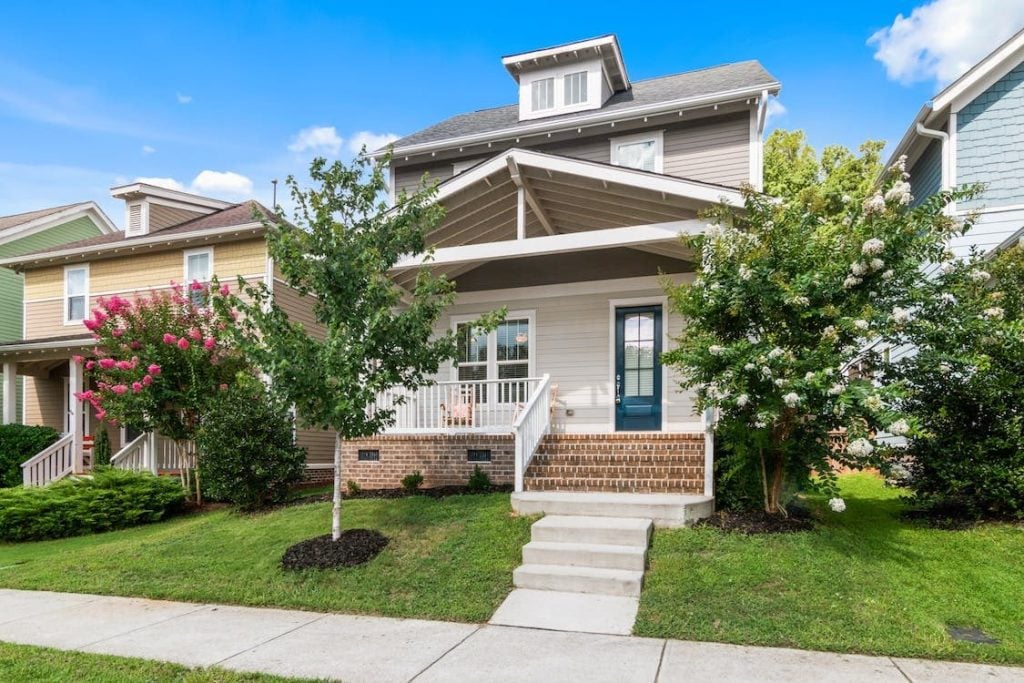
Customization
The last factor to consider in vinyl fence installation cost is the customization. Not all who want vinyl fencing in their back or front yard want the same vinyl fence style. Some may prefer vinyl shadowbox fence or vinyl privacy fences over an average vinyl fence. With these fence installation styles, some may want it to be partnered with an aluminum or steel post. This customization makes the vinyl fence cost more expensive than the usual vinyl fencing.
What makes vinyl fence installation a home trend?
The cost to install a fence, specifically a vinyl fence, depends on a lot of factors. Nevertheless, regardless of the things to consider in fence installation, what makes vinyl or PVC fence a home a trend that others switch from the wooden fence?
The answer simply lies in the materials itself. Basically, vinyl or PVC fence is a petroleum-based product, a special kind of polyvinyl chloride that is durable and not high maintenance compared to a wood fence you need to check after two years for the formation of molds. More significantly, it can last up to 20 to 30 years and, much better, 40 years if they are well taken care of. You can count on your installed privacy fences, and vinyl picket fence can last longer than you expected.
But among all, vinyl fencing is a home trend because of its suitability to many home styles, more so if it’s a residential place under Brittany Corporation—a perfect example of a sophisticated and world-class home style.
Vinyl fences provide an enticing blend of visual charm, a feeling of seclusion, and dependable security. With a vinyl fence installation cost of $4,300 (₱244,040.05) and $6,400 (₱364,2217.60) for a high-end vinyl fence installation, one can achieve their ideal vinyl fence gate that is worth their money.
Investing in your home is a crucial decision, and it’s vital to make sure your money is wisely spent. Consider purchasing a property from Brittany Corporation, where your investment guarantees a substantial return. Rest assured that your choice to reside in an ideal neighborhood will be worthwhile. Immerse yourself in world-class interior design and tranquil surroundings by visiting Brittany. Let the allure of its beauty captivate you!
Suggested Read: Pet-Friendly Home Features To Consider
Suggested Read: Is Villar City A Safe Place To Live In
Suggested Read: 10 World-Class Sports to Experience
Suggested Read: Vinyl Siding Installation Cost
Suggested Read: Fence Installation Cost
Enhancing the vibrancy of your room with a splash of color can breathe new life into your home. It can be an easy and, at the same time, satisfying way to upgrade your place. Be it an interior painting in your wood surfaces, textured walls, or floor space, one thing remains certain: the cost to paint your house will be worth every penny!
However, it is always important to consider the estimated cost to paint a room in a painting project. It includes the labor costs if you want to hire a professional painter and paint color and its price. Let’s be realistic here; painting walls in multiple rooms in your house can be pricey, especially if you don’t research it.
So, to plan your budget for room painting cost, let this article give you an insight into the paint job, some tips, and, more importantly, why it is worth trying! Discover how your newly bought house and lot for sale can have that world-class ambiance through expertly executed painting.
How much does it cost to paint a room per square foot?
Before we go any further, let’s discuss the estimated painting costs that you will probably need to have if you decide to plan the total painting costs of your house interior. Generally, the cost to paint a room per square foot will be $3 to $6 (₱170.23 to ₱340.46), where the square foot of the room is always dependent on its function.

To better understand, here’s the estimated cost to paint a room depending on the square foot of the place.
Living room
To put it simply, expect to purchase more paint if you want to enhance the color of your living room, as these spaces typically encompass around 330 square feet. This endeavor is likely to incur a cost ranging from $900 to $1,600 (₱51,073.20 to ₱90,793.60), given that the living room often serves as the focal point of one’s home with large paint walls and ceiling height. So a meticulous paint job by your hired professional painters and a longer painting process is expected because of a wider square foot of the room.
Bedroom
Suppose you desire a bedroom with the same captivating charm as Portofino Alabang and Crosswind Tagaytay, both found among Brittany homes. In that case, the simplest way to attain this is by painting a room in your home. And since the square footage usually depends on the room size, ceiling height, and wall space, the estimated cost usually ranges from $300 to $750 (₱17,022.30 to ₱42,555.75).
Kitchen
The cost to paint a room in your kitchen will be much less compared to painting a room in your sleeping area because of the cabinets. In fact, the cost to paint those cabinets ranges from $30 to $60 per linear foot (₱1,702.23 to ₱3,404.46). So, if you want to save money but upgrade a room in your home, you might want to try this one first!
Bathroom
The room ranges in this section of your house are notably smaller than the room size of other areas. Due to its estimated square footage, the cost to paint a room will range from $150 to $350 (₱8,510.40 to ₱19,857.60).
That summarizes the estimated cost to paint a room with labor costs, and of course, it depends on the possible square footage of your area. Just remember that these estimated costs can vary depending on the entire room size, how many gallons of paint you will use, and if you will hire professional painters. All decisions are yours; you may even choose oil-based paints or latex-based paints, depending on your preference.
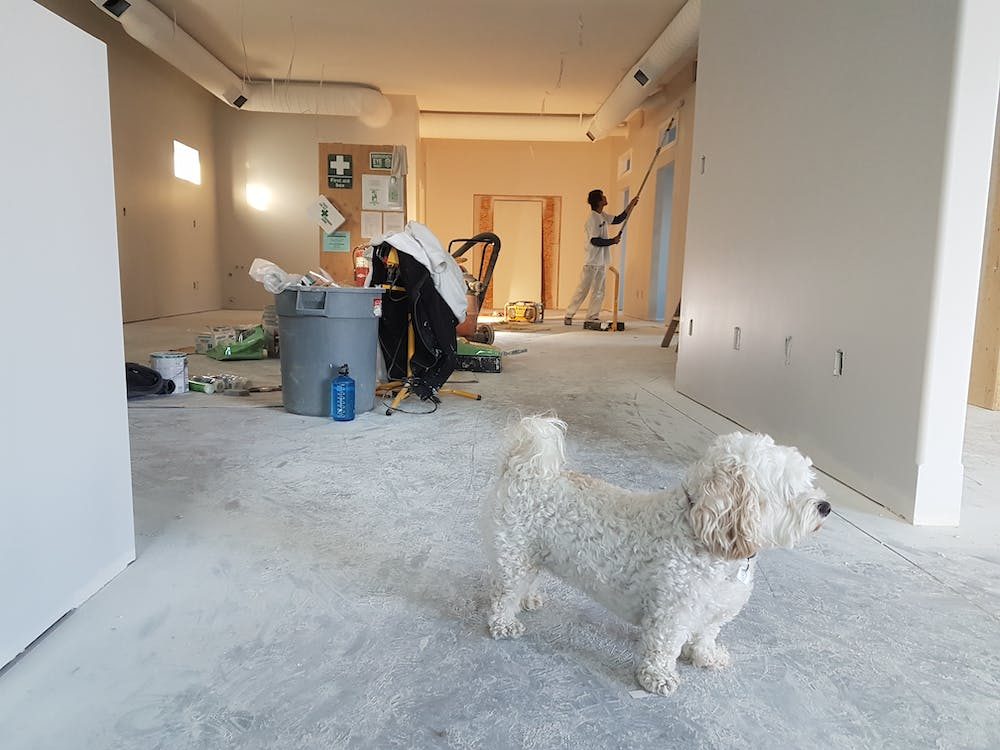
Recommended paint types for interior painting
One of the many advantages of budgeting the room painting cost is the wide availability of paint supplies. You can choose a variety of options that are suited to your budget. Plus, if you still want the same color of paint or a high-quality paint roller, you can easily buy one. It will help you ensure that the painting job that was done in your room and the labor cost will be worth it and meticulously done. It is a great chance to make your home as beautiful as the luxury house and lot for sale in Portofino Alabang, and Vista Alabang. Don’t miss out on the chance to experience the world-class ambiance brought by the magnificent paint color of your home!
As a guide, you can use various paint types for your smooth wall, accent wall, high ceilings, and general painting process. To start, you can choose flat paint, which is the most recommended paint if you want to save money. Nevertheless, if you want to purchase paint gloss color, eggshell, and satin paint will be perfect for you, not to mention that it is also durable.
Still not satisfied with the paint color that you have, don’t worry; you can opt for semi-gloss and high gloss paint—you can be assured that a more durable and great for high traffic areas paint is what you can get. Although these kinds of paint supplies are of high quality, you might need to add to your save money, as they are more expensive than others. But don’t worry because, like those residential places in Portofino Alabang and Vista Alabang, the quality of their value is priceless.
To further widen your options in your paint type, you can refer to oil-based paint and latex-based paint. The main difference between the two in the painting process is that oil-based paint is slow to dry when applied to textured walls and is ideal for metal and wood. On the other hand, latex paint is a paint type that is faster to dry and ideal for interior paint jobs, especially on wide surfaces.

Things to keep in mind if you want to paint a room
The average cost to paint a room can be affected by various factors. It may include the square footage of the area, the paint type you will use, like oil-based paints, how much paint you will apply if it’s more than one coat, and the overall painting process.
However, aside from these lists of painting costs and the labor cost of professional painters, you must consider the possible wall repair when planning the average cost to paint a room. After all, you wouldn’t want the room painter to apply a fresh coat on a broken wall. Just as the cost of a room varies depending on the size, the repair also varies based on the degree of damage.
In addition, windows and doors must consider the cost of painting a room. It would be better if not just the walls or the ceilings were being polished by the painting contractor. The final cost for this one may depend on the type of paint and if two coats will be used.
Lastly, if you want to apply more than one layer, it might cost you more than one gallon of paint, thus an increased cost to paint a room. The good side in all these is that it will make your home more vibrant than ever, just like the luxury homes in Crosswind Tagaytay and Villar City.

Paint a room: A Satisfying way to upgrade your place
Interior painting wouldn’t be a trend for modern homes without any reason! This painting project expresses your artistic self through your interior walls, like accent walls, paint splatters, and the entire room in general. You also have the choice to do your DIY painting without hiring a professional painter from many painting companies. Not to mention that you might have less room painting cost. If you want to save money on the labor cost, you might wanna opt for this one. Though, it can be time-consuming—one of the downsides of diy painting.
Still, in return, a paint room can serve as a quality time for yourself while making your place astonishing through your artistic perspective. Painting a room can help you achieve an affordable way to revive the aesthetic look of your home’s interior and improve indoor quality at the same time.
So, always appreciate the beauty that interior painting projects can do in multiple rooms in your house. Take those house and lot for sale and property in Crosswind Tagaytay under Brittany Homes to understand how the right interior paint job can bring out the best features in a home.
The cost to paint a room usually amounts to $640 (₱36,314.88), but of course, considering all the factors mentioned above, it may still vary. Nevertheless, regardless of the cost of painting a room, the result is truly rewarding. The revived aesthetic ambiance in your house will help you feel more at home, making the investment in room painting well worth it.
Just how Brittany Homes never fails to bring the comfort of living with its world-class amenities. So, if you want to live in a home with a radiant room painting and sustainable surroundings, let Brittany offer you these things. Surely, the painting room ideas will seamlessly complement the beauty of these luxurious homes!
Suggested Read: Pros And Cons of Wood, Gas, And Electric Fireplaces
Suggested Read: Paint or Stain: Which Wood Finish should You Choose
Suggested Read: How Vibrant Interior Paints Make An Impact
Suggested Read: How To Succeed According To Billionaires
Suggested Read: Are Paintings A Good Investment
This article will explore the Philippines’ Air Passenger Bill of Rights. Stay informed and empowered as a traveler, understanding your entitlements and the recent changes impacting Filipino departures.
Recently, the Bureau of Immigration has made headlines due to a potential change in how its officers exercise discretion when clearing Filipino passengers leaving the country.
As noted during the justice department’s budget deliberation at the House of Representatives, there’s an ongoing review of the discretionary power of these officers, particularly when deciding who should be subjected to secondary inspections. This move aims to reduce the scope of such discretion, providing clearer and more transparent guidelines for the departure of citizens.
In another noteworthy incident, concerns arose over the integrity of some airport personnel. A case where an employee from the Office for Transportation Security was caught allegedly swallowing stolen money has put the spotlight on ensuring strict adherence to laws and guidelines. Such events remind travelers of the importance of vigilance and awareness and to remain informed of their rights and responsibilities.
Join us as we explore further what these advancements signify for your travel and how the Air Passenger Bill of Rights is crucial to ensuring your rights as a passenger.
Table of Contents
Key Provisions and Passenger’s Rights
Enhancing Transparency and Accountability
Compensation and Redress Mechanisms
Challenges and Future Considerations
Other Laws Protecting Air Passengers’ Rights in the Philippines
- Republic Act No. 776 or the Civil Aeronautics Act of the Philippines
- Republic Act No. 9497 or the Civil Aviation Authority Act of 2008
- Joint Administrative Order No. 01 Series of 2012
- CAB Memorandum Circular No. 28 Series of 2012
- Republic Act No. 7764 or the Carriage of Goods by Sea Act
- International Conventions

What is the Air Passenger Bill of Rights
The Air Passenger Bill of Rights (APBR) in the Philippines is a joint administrative order by the Department of Transportation (DOTr) and the Department of Trade and Industry (DTI).
This regulation ensures the protection of air passengers by stipulating their rights in the event of flight delays, cancellations, and other inconveniences. It primarily focuses on providing clear guidelines on the compensation and treatment of passengers, like offering refreshments, hotel accommodations, and reimbursement in case of significant delays or cancellations.
The APBR also enumerates passengers’ rights in lost, delayed, or damaged baggage cases. Airlines must provide just compensation and immediate assistance, such as first aid or special assistance to persons with disabilities. The order ensures that airline policies remain transparent, fair, and in line with global standards, offering travelers a safeguard against potential airline mishaps.
Key Provisions and Passenger’s Rights
According to the Air Passenger Bill of Rights in the Philippines in the Official Gazette, the bill is a crucial legislation ensuring air travelers are treated fairly and justly. Here are its major provisions:
Source: Department of Transportation and Department of Trade and Industry
Right to Information
Passengers have the unequivocal right to receive accurate and timely information about their flights. This means airlines must inform passengers promptly about any changes, delays, or cancellations.
Right to Compensation
Passengers are entitled to compensation if a flight is delayed, canceled, or overbooked. The exact nature and amount of compensation may vary based on the specific situation, but the right to it is unequivocal.
Right to get help and payment if your flight is canceled.
- Passengers must be notified of cancellations 24 hours before ETD.
- Options for rebooking or reimbursement are available.
- Amenities include food, drinks, accommodations, etc.
- Full reimbursement for cancellations due to force majeure and security reasons.
Right to get help and payment if your flight is delayed, with some exceptions.
- Passengers are entitled to amenities for delays of at least three hours.
- Rights include refreshments, communication, rebooking, and endorsement to another carrier.
- A delay of six hours entitles passengers to additional compensation.
- Sufficient food and beverages must be provided for a tarmac delay of at least two hours.
Right to payment for baggage that is late, lost, or damaged.
- Passengers are entitled to ₱2,000 compensation for every 24-hour baggage delay.
- Refund of checked baggage fees if baggage is not delivered within 24 hours.
- Compensation for damaged or lost luggage is subject to relevant conventions.
- Presumption of loss applies if baggage is not delivered after seven days.
Right to payment if a passenger is injured or passes away.
- Compensation is governed by relevant conventions and inter-carrier agreements.
- Domestic flight compensation is based on the amount stipulated in international conventions.
Right to get any compensation immediately.
- Payment should be made available to affected passengers immediately.
- Payment can be received at the airport, the air carrier’s main office, or any branch.
- Payment must be available in check, cash, or a convertible document within 15 days of the incident.
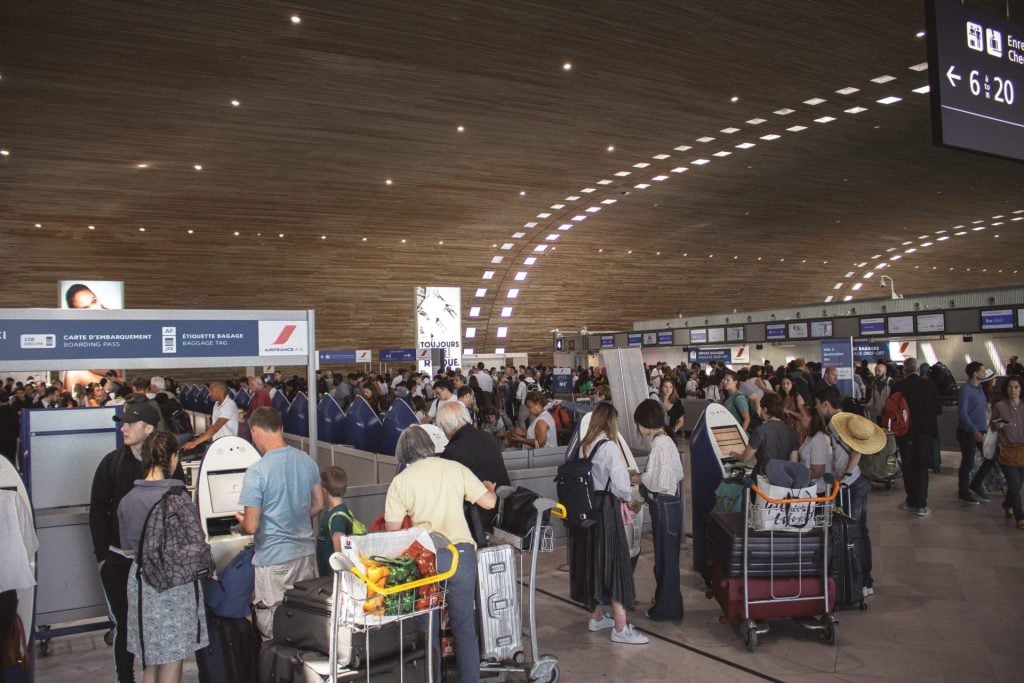
Right to Assistance and Accommodation
For extended delays or flight diversions, airlines are obligated to provide passengers with necessary assistance. This can range from refreshments and meals to hotel accommodations, depending on the length of the delay.
Right in Case of Mishandled Baggage
Passengers are entitled to compensation for lost, damaged, or delayed baggage. Airlines must handle baggage with care and compensate passengers adequately if they fail to do so.
Right Against Denied Boarding
Airlines cannot deny boarding arbitrarily. Passengers are entitled to compensation and alternative arrangements in cases where boarding is denied, perhaps due to overbooking.
Right Against Discrimination
Discriminating against passengers based on disability or nationality is strictly prohibited. Airlines must ensure equal treatment of all passengers and provide assistance to those with special needs.
Enhancing Transparency and Accountability
The Air Passenger Bill of Rights (APBR) in the Philippines is a pivotal legislation that greatly emphasizes enhancing transparency and accountability within the aviation sector.
This bill, serving as a comprehensive air passengers summary, lays down clear guidelines on how air carriers should operate, ensuring that passengers know their entitlements during travel. The legislation aids in establishing clear standards of communication and service, which include:
- Enhancing Transparency and Accountability:
- Prioritizing Customer Satisfaction:
- Taking Necessary Measures to Prevent Inconvenience and Breaches of Passenger Rights.
A key aspect of the APBR is its clarity on air passenger rights, particularly when travelers face inconveniences such as flight delay or baggage mishandling. Moreover, the bill is not limited to domestic travel; it also offers provisions that align with global standards, ensuring that passengers on international flights are equally protected.
By delineating these rights clearly and comprehensively, the Air Passenger Bill of Rights bolsters confidence among travelers, affirming that the Philippine aviation sector prioritizes their needs and addresses potential grievances with transparency and fairness.
Compensation and Redress Mechanisms
The APBR not only underscores passengers’ rights to seek redress but also provides a structured process for addressing grievances. If travelers feel their rights have been infringed upon, they can file complaints and pursue suitable remedies.
The legislation also establishes a mechanism for addressing passenger complaints and disputes. In this regard, the Civil Aeronautics Board (CAB) acts as the overseeing regulatory body, ensuring the bill’s enforcement. Altogether, the APBR stands as a firm declaration of the Philippines’ dedication to fostering a transparent, fair, and passenger-focused aviation industry.
Challenges and Future Considerations
The Air Passenger Bill of Rights (APBR) in the Philippines has made significant strides in protecting airline passenger rights, but, like any evolving legislation, it faces challenges that need addressing. One primary concern arises with international flights.
Since international carriers operate under various jurisdictions and regulations, there’s a grey area regarding the uniform application of the APBR. This often leads to ambiguity in scenarios of flight cancellations or when a flight is delayed.
As the volume of both domestic flights and international flights increases, there’s a growing strain on air carriers to uphold the standards set by the APBR consistently. With the rise in flight cancellations and delays, passengers frequently find themselves needing clarification on their rights or the appropriate course of action. The challenge lies in the enforcement and ensuring that passengers are adequately informed and empowered.
For the future, there’s a pressing need to continually adapt the APBR to the changing dynamics of the aviation industry. With the advent of more low-cost carriers and an increasingly globalized world, the frequency of delayed or cancelled flights is bound to change.
The Philippines must consider refining the legislation, ensuring it is robust enough to handle evolving challenges while safeguarding passengers’ rights on domestic and international journeys. Furthermore, collaboration with international bodies and carriers can pave the way for a more harmonized approach to airline passenger rights, bridging gaps and reducing discrepancies in applying rights across borders.
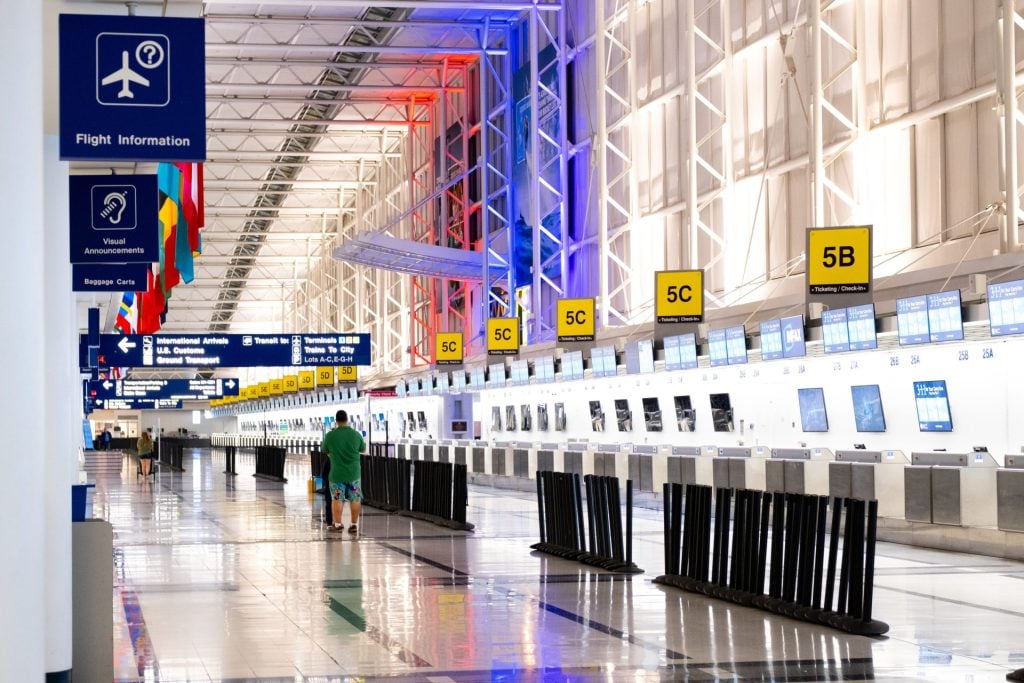
Other Laws Protecting Air Passengers’ Rights in the Philippines
Beyond the Air Passenger Bill of Rights, other legislation is in place to safeguard the rights of airline passengers. These laws ensure that travelers are adequately protected, especially when they experience inconveniences such as a cancelled flight or prolonged flight delays.
For passengers caught in the frustrating loop of a delayed or cancelled flight, these laws offer guidelines on the compensations and amenities they are entitled to. As the country witnesses a growth in international passenger traffic, the need for such protective measures becomes increasingly paramount.
Most of these laws also mandate transparency measures; for instance, details about passengers’ rights are often required to be prominently displayed on an air carrier’s website. This ensures that domestic or international passengers are always informed and can confidently make travel decisions, knowing that robust legal frameworks uphold their rights.
Republic Act No. 776 or the Civil Aeronautics Act of the Philippines
Republic Act No. 776, commonly referred to as the Civil Aeronautics Act of the Philippines, stands as a foundational legal framework that governs the aviation sector in the country. Established through this Act, the Civil Aeronautics Board (CAB) emerges as the paramount regulatory authority overseeing all aspects of the aviation industry in the Philippines.
Beyond its regulatory role, the CAB carries the significant responsibility of ensuring the safety and welfare of air passengers, a testament to the Act’s commitment to prioritizing passenger well-being. The Civil Aeronautics Act underscores the Philippines’ dedication to a safe, efficient, and passenger-centric aviation industry.
Republic Act No. 9497 or the Civil Aviation Authority Act of 2008
Republic Act No. 9497, commonly known as the Civil Aviation Authority Act of 2008, is a significant legislation that founded the Civil Aviation Authority of the Philippines (CAAP). This body was instituted as the primary regulatory agency tasked with executing and overseeing the nation’s civil aviation guidelines and regulations.
A critical aspect of CAAP’s mandate is ensuring the Philippines complies with international aviation safety standards. Furthermore, it is responsible for supervising key aviation operations, including licensing airlines and airports, certification processes, and thorough inspections. In essence, the act empowers CAAP to act as the cornerstone of safe, efficient, and compliant aviation practices in the Philippines.
Joint Administrative Order No. 01 Series of 2012
Joint Administrative Order No. 01 Series of 2012 is a landmark directive jointly issued by the Department of Transportation and Communications (now referred to as the Department of Transportation) and the Civil Aeronautics Board (CAB). This crucial order delineates the guidelines and standards focused on safeguarding the rights of air passengers.
Its provisions emphasize transparent information disclosure, ensuring passengers are adequately informed about their flight status, terms, and conditions. The order also lays down clear protocols for passengers being denied boarding due to overbooking or other factors. Moreover, it establishes rights and compensatory measures related to flight delays, cancellations, and the proper handling of baggage.
The order also provides mechanisms for effective complaint resolution, ensuring that passenger grievances are promptly and justly addressed. Overall, this joint order reinforces the commitment of the Philippines’ aviation sector to prioritize passenger welfare and rights.
CAB Memorandum Circular No. 28 Series of 2012
CAB Memorandum Circular No. 28 Series of 2012 serves as a cornerstone document in the Philippine aviation sector, setting forth definitive guidelines and procedures concerning resolving passenger complaints against airlines. This circular elucidates the passengers’ rights and stipulates the airlines’ obligations.
This memorandum’s primary emphasis is ensuring that any grievances voiced by passengers are addressed promptly and equitably. With its enactment, passengers can have enhanced confidence in the aviation system, knowing a structured mechanism is dedicated to handling and resolving their concerns.
The overarching aim of this circular is to foster an environment of trust and transparency between airlines and their passengers, ensuring that all disputes are managed reasonably and efficiently.
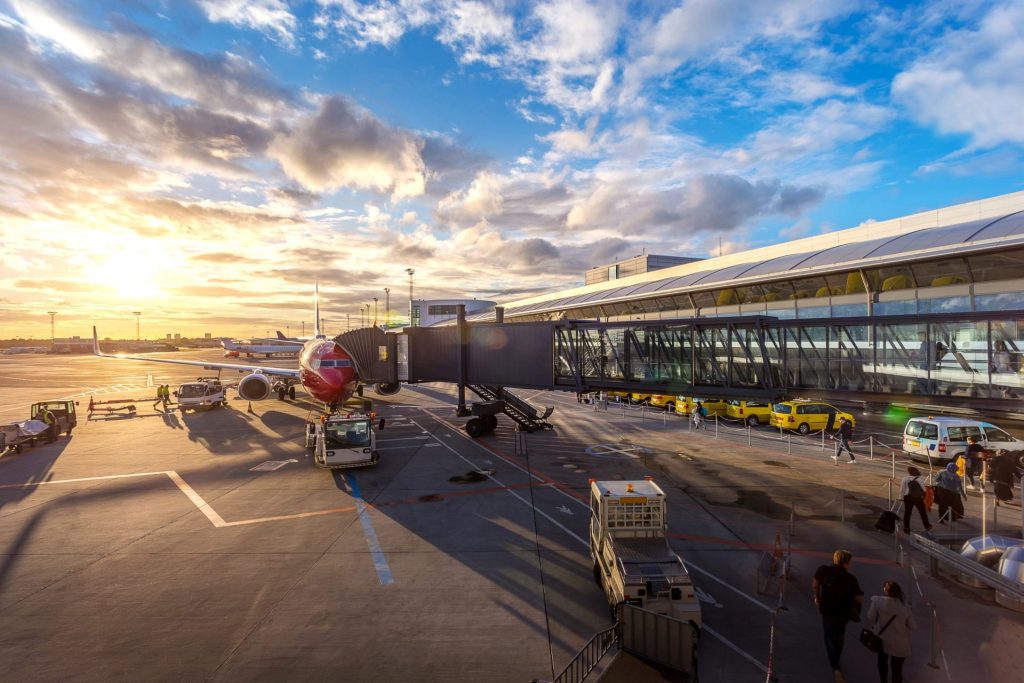
Republic Act No. 7764 or the Carriage of Goods by Sea Act
Republic Act No. 7764, commonly known as the Carriage of Goods by Sea Act, is a fundamental piece of legislation in the Philippines that governs the transportation of goods across maritime channels. While its primary emphasis is on maritime transport, an essential aspect of this law also extends its purview to the aviation sector.
Specifically, it delineates airlines’ liability concerning any loss, damage, or delay of cargo transported by air. This dual focus ensures that carriers, whether by sea or air, adhere to uniform standards and practices when handling goods, safeguarding the interests of both consignors and consignees. The Act, therefore, serves as a comprehensive guide to the rights and obligations of all parties involved in transporting goods, ensuring clarity, fairness, and accountability in the process.
International Conventions
The Philippines, in its commitment to safeguarding the rights of air passengers, has aligned itself with global standards by becoming a signatory to multiple international conventions. Among these pivotal agreements are the Warsaw Convention, the Montreal Convention, and the Cape Town Treaty. These conventions play a crucial role in ensuring air travelers’ safety, security, and rights both within and outside the Philippines.
Passengers must be aware of these regulations, as they offer a framework for recourse when their rights may be compromised during air travel. The Philippines reinforces its dedication to promoting a transparent and passenger-centric aviation environment through these international conventions.
Final Thoughts
The Air Passenger Bill of Rights in the Philippines is a beacon of protection and assurance for travelers. The bill provides passengers with clear avenues for redress, from flight delays and cancellations to mishandled baggage and unforeseen complications.
The Philippines’ commitment to these global standards underscores its dedication to ensuring its aviation sector operates transparently, fairly, and with the utmost concern for passenger welfare. As travelers, understanding these rights is not just beneficial—it’s essential. It equips individuals with the knowledge to navigate challenges, making their journeys smoother and more secure.
How the Air Passenger Bill of Rights Reflects Brittany’s Standard of Living
The Air Passenger Bill of Rights, with its high standards and stringent guidelines, mirrors the principles of Brittany Corporation—a testament to luxury, quality, and exceptional service. Just as the bill ensures travelers experience the pinnacle of air travel, Brittany Corporation is dedicated to providing a luxurious living experience.
Our properties, from the grandeur of Portofino Heights and the romance of Amore at Portofino to the urban sophistication of Vista Alabang and the tranquil exclusivity of Forresta and Forresta Luxury Lots, are curated to offer unparalleled luxury and comfort. The dedication to quality in the Air Passenger Bill mirrors Brittany’s unwavering commitment to elevating living standards, ensuring that every resident experiences an opulent and serene lifestyle.
Suggested Read: Villar Completes PICC Conversion Into Covid-19 Treatment Facility
Suggested Read: Understanding Travel Tax: Philippines’ Tourist Fee Decoded
Suggested Read: Republic Act No. 11928: Everything You Need To Know
Suggested Read: Civil Service Exam 2023: Schedule And Requirements
Suggested Read: Fire Insurance Claim For Your Home Made Easy
Living in the thriving hub of Metro Manila can sometimes feel like too much. The busy streets and loud city life can become overwhelming to the point where you would want to find a home that will give you a much-needed peaceful haven. You will find the serene dream luxury home you are looking for right in the heart of Villar City.
Villar City is a flagship real estate development created with luxury and sustainability at the forefront. This will also serve as a legacy project for the Villar Group, ensuring their success for generations to come. Sustainability in Villar City is designed to integrate beautifully with a world-class luxury lifestyle, giving residents a neighborhood that is green, vibrant, and forward-thinking.
What is Villar City?
Villar City is a flagship luxury development that encompasses a 3,500-hectare estate that covers areas of Alabang, Las Piñas, and Cavite. Villar City luxury properties are master-planned to include luxury residence communities, a thriving central business district, a university town, and ample green spaces and outdoor leisure facilities for residents.
Located in a prime location in Metro Manila, Villar City is set to be a premier lifestyle hub and new center of gravity for thriving communities in the south. With verdant landscapes, luxury lifestyle hubs, modern amenities, and various family entertainment centers, the Villar Group has created a welcoming home for growing families and a thriving nexus for business expansion.
Villar City Sustainable Properties
Sustainability and a commitment to a greener future are at the forefront of Villar’s vision for Villar City and its different luxury residential estates. This new center of gravity of Metro Manila marks the newest landmark venture of Vista Land’s developments together with Brittany Corp., Vista Land’s luxury real estate arm. Their goal with these new developments is to elevate lifestyles, foster socialization, and create a world-class urban development for more Filipinos and their families.
Portofino Alabang and Forresta are the two luxury estates nestled within the lush landscapes of Villar City. Each estate has its own unique charm, but both offer residents a home in modern cities that embraces open spaces, lush greenery, and family leisure activities. A luxury home in either of these prime locations will guarantee a lifestyle that gives you only the best things in life.
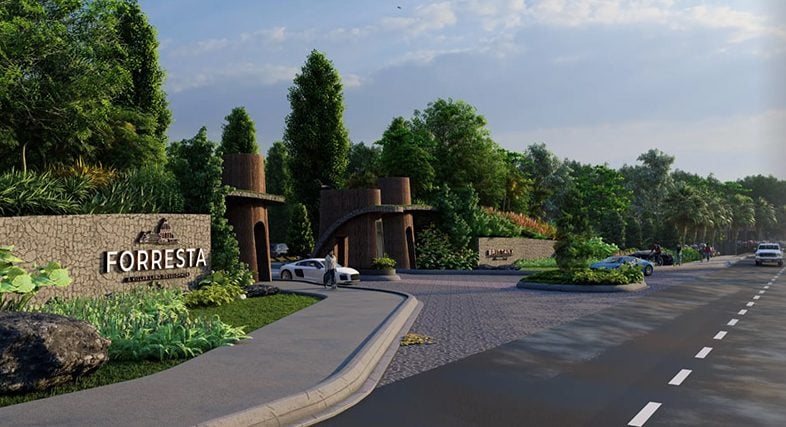
Villar City Sustainable Properties #1: Portofino Alabang
Portofino Alabang is the primary luxury estate in Villar City. Located just south of Metro Manila, Portofino transports you to the shores of Italy with the estate’s Italian-themed architecture and design. Live out your dream Italian lifestyle with a luxury home located in Portofino Alabang.
Portofino takes inspiration from the stunning landscapes and architecture of Italy, bringing an old-world classical charm to modern Filipino families. As a whole, Portofino provides an Italian escape right in the heart of Metro Manila’s south.
This luxury neighborhood is perfect for young and growing families as it prioritizes spaces and recreational amenities that foster family connection and deep relationships. This exclusive community features world-class amenities like swimming pools, fitness gyms, a clubhouse, tennis courts, basketball courts, and several parks, playgrounds, and green walkways.
Aside from the estate’s verdant landscape, Portofino also has easy access to commercial complexes like Evia Lifestyle Center, Alabang Town Center, and Molito Lifestyle Center. Access from Portofino to other areas in and out of Metro Manila is also facilitated by the Manila-Cavite Expressway, Villar Avenue, and Daang Hari Road.
Villar City Sustainable Properties #2: Forresta Villar City
Located in the heart of the Villar City project is the ultra-luxury residential development of Forresta. Surrounded by a million trees, Forresta is dubbed by the Villar Group as a city in the forest, a green oasis of colorful blooms and abundant plant life.
Forresta is a modern residential community that maximizes green, sustainable, and tranquil surroundings with the promise of a sophisticated modern lifestyle. This 119-hectare luxury community will give you the space you need to prioritize your physical and mental well-being and provide you with a safe and nurturing environment to raise your children.
Forresta also features carefully designed eco and smart homes that are perfect for families who want to live more sustainable lifestyles in the city. Aside from energy-saving and smart solutions, this community is also set up to seamlessly connect to the best internet fiber connection, making it a future-ready community.
For individuals who want to experience eco-luxury living while practicing sustainability in Villar City, a home in Forresta is the perfect sustainable property for you.
Sustainable Business Opportunities in Villar City
Villar City is more than Metro Manila’s new center of sustainable living. It is also envisioned to be a center for economic growth through a planned tech valley and modern CBD that fosters multifunctional development in Alabang, Las Piñas, and some areas of Cavite province.
Vista Land and Villar City aim to support development in the business sector, creating a new center of gravity for businesses focused on expansion and growth.
This proposed modern CBD will make Villar City a highly desirable address, raising property values and introducing high-class living and enterprises to Filipinos of discerning tastes. With a strong sense of the future, Villar Group, Vista Land, and Brittany Corporation are setting the tone for the future direction of luxury sustainability in the country.
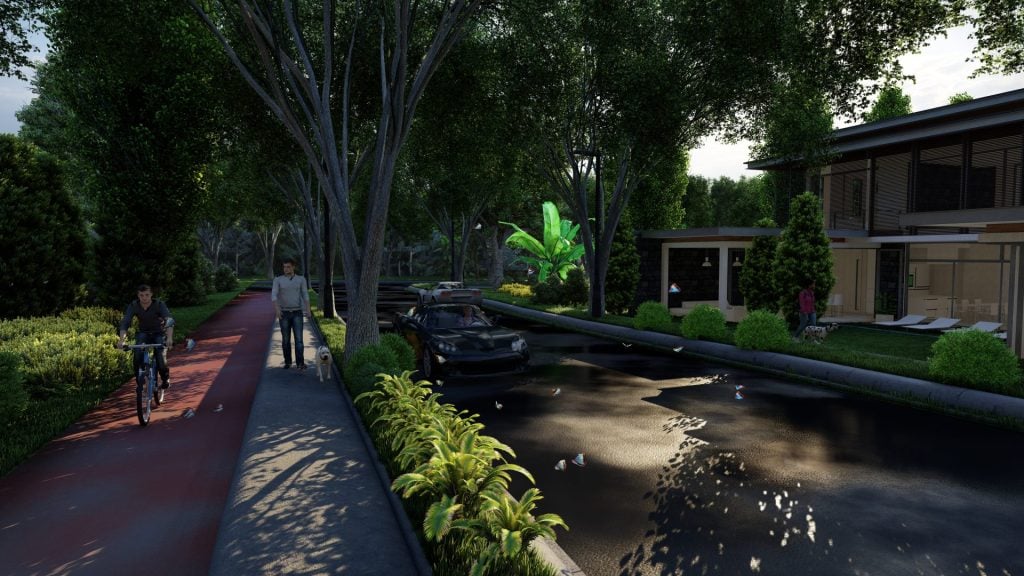
How to Access Villar City?
Villar City is a premier estate, and as expected of a world-class location, road access to this luxury city is also well-planned.
With Villar Group’s purchase of the Muntinlupa-Cavite Expressway from Ayala Corporation, driving to and from Villar City can be done with ease. This ultra-luxury development can also be easily accessed through Villar Avenue, Daang Hari Road, and Daang Reyna Road.
Why Live in Luxury and Sustainability in Villar City?
When you have a taste of the luxury lifestyle, you only want the best for you and your family. And you will find the best only at Villar City’s Portofino and Forresta luxury estates. Living and doing business in the city can take a toll on your health. It can lead to stress, exhaustion, and even burn out. The best salve for that is a luxury home that is lovingly nestled in a quiet green oasis that can shelter you from the hustle and bustle of the outside world.
With Portofino Alabang’s tree-lined streets, you get the serenity and calm that only nature can provide. Your luxury home in this exclusive community is your safe haven where you can fully relax, unwind, and let go of the stresses of the day. A grand and spacious home inspired by the very best of Italian architecture gives you a beautifully timeless home that you will love for years into the future.
If you want a forest experience without leaving the city, then an ultra-luxury residence in Forresta is perfect for you. Feel calm and grounded by the one million trees scattered all around the estate, giving residents a rare green pocket in a suburban setting. Aside from the newest smart houses and sustainable luxury homes, Forresta will also encourage you to spend active hours outdoors. This estate is designed with several parks, green spaces, biking trails, and walking routes to ensure you can fully appreciate your leisure time outdoors.
Make a sustainable and luxurious choice for your future. Invest in a sustainable property in Villar City with Brittany Corporation! Browse our luxury listings for Portofino and Forresta and find your dream sustainable home today.
Suggested Read: Sustainable Design That Won’t Ruin Your Home’s Charm
Suggested Read: Accessibility Features That Make Villar City Stand Out
Suggested Read: Why Villar City is the Ideal Place for Retirement
Suggested Read: Why Forresta Has The Best Green Spaces
How much do granite countertops cost?
The cost of granite countertops in the Philippines ranges from 5,000 to 50,000 PHP. This overall cost will depend on the type of granite you use and the total square footage of your project. Granite in colors that are widely available and can be sourced from many places is less expensive, with some starting at 1,800 PHP per square foot. Meanwhile, rarer types or colors of granite can fetch a higher price tag. An example of this is the Brazilian Blue Bahia granite which starts at 70,000 PHP per square foot.
Table of Contents:
- How much do granite countertops cost?
- How much does granite cost without installation?
- How much does it cost to install granite countertops?
- What other factors can affect the cost of granite countertops?
Granite countertops are a classic home favorite because it is visually appealing. Granite slabs have unique striations, patterns, and colors that will automatically give your luxury home a distinct personality. Granite countertops are also UV-resistant. Even with exposure to direct sunlight throughout the years, your countertops will not fade and will maintain their color in the long run.
As beautiful and sturdy as granite is, your granite countertops will require regular maintenance to keep them looking pristine and to get rid of any bacteria. Depending on the type of granite you get, your granite countertops may require regular sealing. Harder and higher-quality granite will require less upkeep. You may want to keep this in mind when considering the cost of granite countertops from installation to future maintenance.
When thinking about your new construction or your next kitchen renovation, granite countertop installation should be planned and executed by professionals. As to the cost of installing granite countertops, it is important to consider what type of granite slabs you prefer, the cost of granite per square foot, the total area you will be covering, as well as labor costs.
This article will tell you everything you need to know before pushing forward with your granite countertop installation home project.
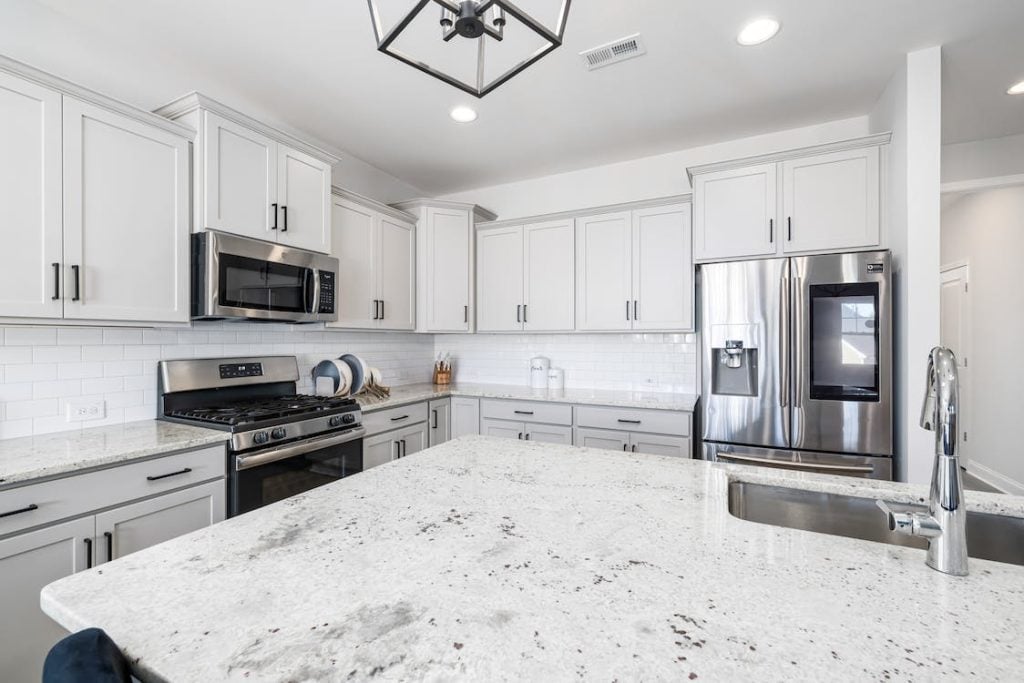
How much does granite countertops cost without installation?
Depending on the granite you choose, your granite countertops price will cost somewhere between 1,800 PHP per square foot to 5,000 PHP per square foot. If you choose a more expensive, thick, or rare type of granite, the slabs alone may cost you between 10,000 PHP to 70,000 PHP per square foot.
Granite color types like Salt and Pepper and Chestnut brown are widely available. A high supply of these granite varieties means that they cost only around 1,800 to 2,900 PHP per square foot.
Aside from color, the cost of granite countertops will also vary depending on factors like origin, availability, shipping costs, and unique distinctiveness. A granite slab is categorized into different levels using these factors. The quality of the natural stone may not be that different across the different levels, but rarity may dictate a higher level and corresponding higher price.
- Level 1 Granite: Simple, uniform designs and standard colors.
- Level 2 Granite: More unusual designs, markings and colors.
- Level 3 Granite: Distinct designs, markings, and colors.
- Level 4 Granite: Highly distinct designs, markings, and colors.
- Level 5 Granite and Higher: Rare and intricate designs, markings, and colors. Rare place of origin.
Take note, however, that low-quality granite is often softer than a high-quality granite countertop. Yes, it may be cheaper, but the slightly softer material makes it prone to more chips, scratches, and dents over time. When you opt for lower-quality granite kitchen countertops, you might need to replace them sooner than anticipated. High-quality granite is harder and requires less sealing, maintenance, and upkeep.
- Average grade granite: 2,300 PHP per square foot
- Premium or high grade granite: 3,500 PHP per square foot
The thickness and size of the granite kitchen countertops will also affect the cost. Granite is a natural stone. Before it can be bought and installed as countertops, it has to be processed into large blocks, which are then sliced into thin slabs. the thickness of granite countertops ranges from 15 mm to 30 mm. The average thickness of a slab of granite is 18mm. But you can opt for a 15mm slab which can be cheaper. Granite is also commonly sold in 30mm thickness as well. The thicker the slab, the higher the cost. Do consider also that thinner slabs or granite may compromise the strength of your granite countertop.
Large sheets of granite are more expensive than smaller sheets, or even remnant slabs from previous projects or orders. You can choose to use these smaller slabs to reduce cost, however, you may end up with more seams.
Another great cost-effective option is granite tiles. Granite tiles are smaller, and they offer the same visual appeal as larger granite slabs. Granite tiles may require more seams and grout lines, but they can be a visual accent especially when used as a backsplash.
And a final less expensive granite option is a granite overlay. This is a type of granite that is combined with resin. It is designed to fit over your current countertop resulting in a less labor-intensive project. This type of granite countertop does have some drawbacks. It will not be as heat-resistant as granite. It will also become non-porous over time and requires regular resealing.
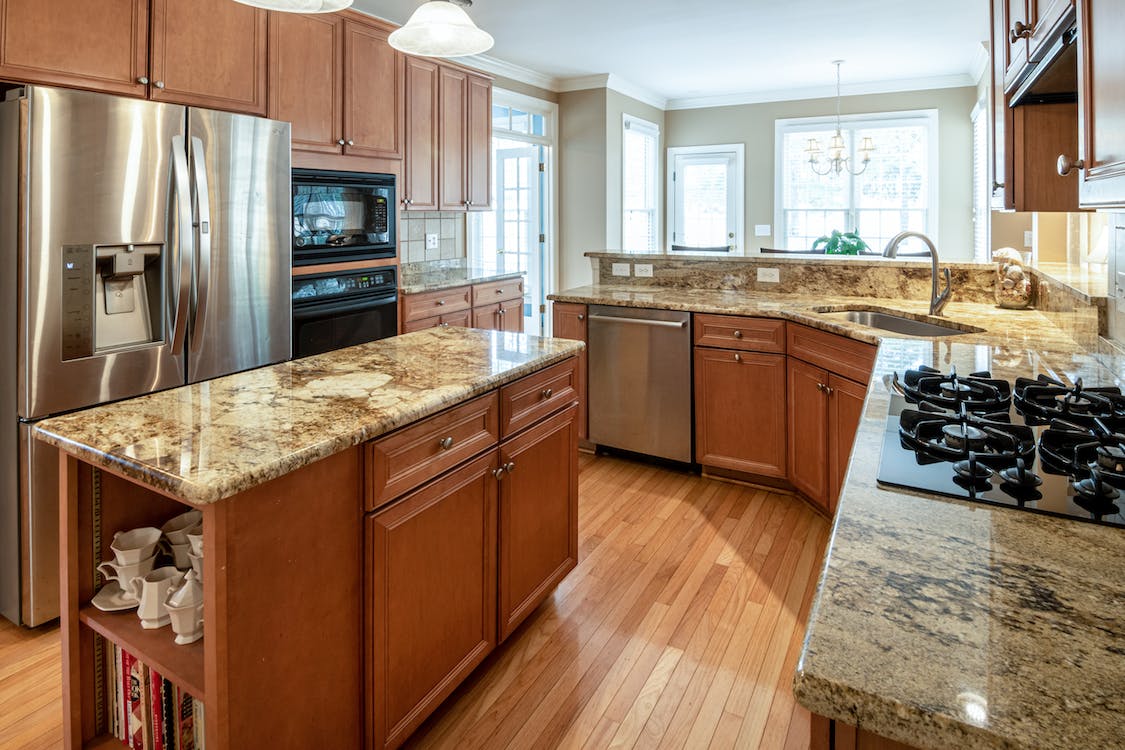
How much does it cost to install granite countertops?
To ensure that your granite kitchen counters stand the test of time, it is best to hire professional granite countertop installers. While labor is an additional cost, the end result gives you a beautiful countertop that will last for several years.
The typical installation of granite countertops cost around 1,800 PHP per square foot. Some professionals and contractors may choose to charge an hourly rate, so you will have to clarify this with them before starting this home development project.
Of course, there are other factors that may affect the total labor costs of installing your granite countertops. Examples of them will be listed below, and you should include them in your calculations when preparing your granite countertop budget.
Seams: Seams are formed when two pieces of granite need to be joined together. The more seams required for your granite countertop, the more labor-intensive of a project it is for the installer. They will have to make sure colors and any unique veining or pattern in your granite will line up well between the different slabs. To save time and money, be sure to discuss and decide on seam placement before the installation process begins.
Leveling: To avoid potential cracking or damage to your granite countertops, the surface of the installation has to be completely level. You will incur additional labor costs when your installer has to make additional adjustments to your surface to ensure proper leveling. This can include sanding down cabinets and shelves or adding shims.
Fabrication and Cutouts: Granite countertops are typically custom-cut to fit your kitchen or bathroom countertop specifications. Fabrication and cutouts will increase installation costs. Cutouts for sinks, plumbing fixtures, and outlet placements will add to the total installation costs for your granite countertops. Pricing for additional fabrication and cutouts will also vary depending on the type of granite you use. Harder granite varieties are more difficult to cut, which increases the price. If you choose to add designs to the edges of the granite, this will also mean an additional cost for installation.
Supports: Granite is a piece of stone. And depending on the size and coverage you need, your granite countertop may be heavy. When this happens, additional support structures need to be put in place during installations. You may also need additional support when you are installing granite countertops over dishwashers, washing machines, or other large appliances.
What other factors can affect the cost of granite countertops?
Aside from the factors listed above, there are a few other things that will affect how granite countertops cost. Keep your new granite kitchen countertops within your budget by taking note of these possible additional costs.
Existing Countertop Removal
If you are remodeling or renovating your kitchen, you probably have an existing countertop. If you plan to add a new granite countertop installed, the removal of your existing countertops is an additional cost you have to prepare for. This will typically cost you an additional 300-350 PHP.
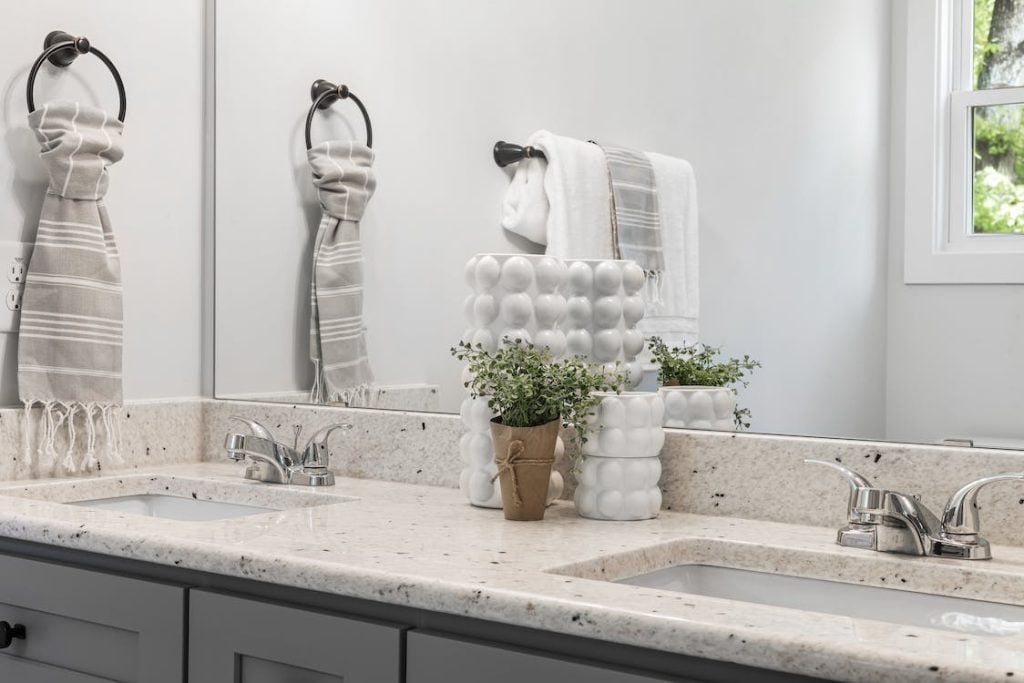
Finish Options
The way a granite countertop is finished and polished will create a distinct look. There are three different finishing options and each will vary in price.
Polished Granite: Polished granite is the most affordable option. It is the standard finish and it produces glossy granite countertops that are smooth and shiny.
Honed Granite: If you prefer granite countertops to be less shiny, then opt for a honed granite finish. This type of granite countertop is still smooth, but less shiny which reduces glare and hides imperfections. Price-wise, this is the mid-range option.
Leather Finish: Leather finish produces granite countertops that are not smooth. If focuses on bringing out the texture and character of the stone, while still hiding any of its imperfections. A leather finish is the most expensive option for your granite countertops.
Origin and Color of Granite
As with most construction materials, locally sourced granite will be less expensive than granite sourced from abroad or more exotic places because of transportation costs and additional importation fees. Some colors of granite are more common than others, making them less expensive. Rare colors might have a higher demand but less supply, driving up granite countertops price.
- White, Black, and Gray Granite: These colors of granite are more common and readily available. They are soft and easy to cut, and there are lots of design options.
- Green Granite: Depending on the level, this type of granite countertop can range from very affordable to very expensive.
- Gold Granite: A less common color of granite. This also typically has more unusual designs.
- Red Granite: This is expensive and somewhat rare. Red granite is also hard and, therefore more difficult to cut.
- Blue Granite: This color of granite is rare and difficult to quarry. Blue granite is often the most expensive color of granite you will encounter. Finish Options
Edge Treatments and Special Cuts
The free edge of your granite countertops will be exposed daily. Most manufacturers will have some readily available edge treatments for you to choose from. These standard edge treatments are eased, bevel, and bullnose style. If you prefer a different or more intricate edge for your granite countertops, it is possible but will cost you more. Listed below are the different granite edging options you can pick.
- Eased: This is a straight-edge finish, with a slightly raised radius. This gives a subtle and smooth finish.
- Bevel Edge: This type of granite countertop edge is angled, with a slanted cut usually at 45 degrees. This type of edge exposes more of the stone. You can also opt for a double bevel, which will include an angled cut on the top and bottom edge.
- Bullnose: This type of edge is rounded, making the granite countertops less susceptible to chipping or wear and tear around the edges. A half bullnose style will only have either the top or the bottom edge that is rounded.
- Ogee: This is a slightly more detailed edge design. The top half resembles an “S”, while the bottom half is left as a straight edge.
- Triple Pencil: This is a more intricate design of three pencil-shaped cuts along the edge of your granite countertops.
- Specialty Edging: Some manufacturers are able to do additional custom or specialty edge designs for an additional price. If none of the standard options interest you, you can ask them for other edge options available.
Make your Kitchen Sparkle with New Granite Countertops
Installing granite countertops in your new home will make your kitchen feel more beautiful and inviting. Of course, granite countertops are not only beautiful, but they are also very functional. Countertop space is an essential feature to make your kitchen an effective hub of cooking activity.
Make the most of your kitchen and maximize the functionality and beauty of your home with granite countertops. In the mood to invest in a new home with your dream kitchen? Browse the Brittany website for our stunning properties in Alabang, Santa Rosa, Tagaytay, and Baguio.
Suggested Read: Sustainable House Remodeling Techniques For Your Luxury Home
Suggested Read: Maximize Your Space with A Condo Kitchen Island
Suggested Read: Best Kitchen Layout For Your Luxury Home
Suggested Read: Post-Pandemic Financial Forecast
Property prices and values have historically exhibited a fascinating and often unknown advantage when considered over time. Understanding the dynamics of property value increase is essential for making informed decisions in the real estate market.
Important Concepts in Understanding How the Property Market Works
The real estate sector is multifaceted, encompassing a wide range of properties and purposes, from residential homes to commercial spaces and everything in between.
Property Prices
Property is a cornerstone of human civilization, and its value has been a subject of fascination, speculation, and investment for centuries. Whether you are a homeowner, a prospective investor, or simply an individual interested in the real estate market, the concept of property value increase is of paramount importance.
Property Values
Property values play a pivotal role in determining the financial well-being of property owners, developers, and investors. Also referred to as real estate values or real estate prices, these represent the monetary worth of a specific property at a given point in time. These values are influenced by a myriad of factors, such as location, size, condition, and the prevailing economic climate.
Property Value Appreciation
What sets real estate apart from many other forms of investment is the potential for property value appreciation, the gradual increase in a property’s value over time.
Property value appreciation can be attributed to various factors, and one of the most significant is the principle of scarcity. Unlike other commodities, real estate is finite, and its supply is limited.
As the global population continues to grow, the demand for living spaces and commercial real estate properties rises, putting upward pressure on property values. In thriving urban areas, where real estate development is often constrained by geographical boundaries, property values tend to appreciate at a more rapid pace.
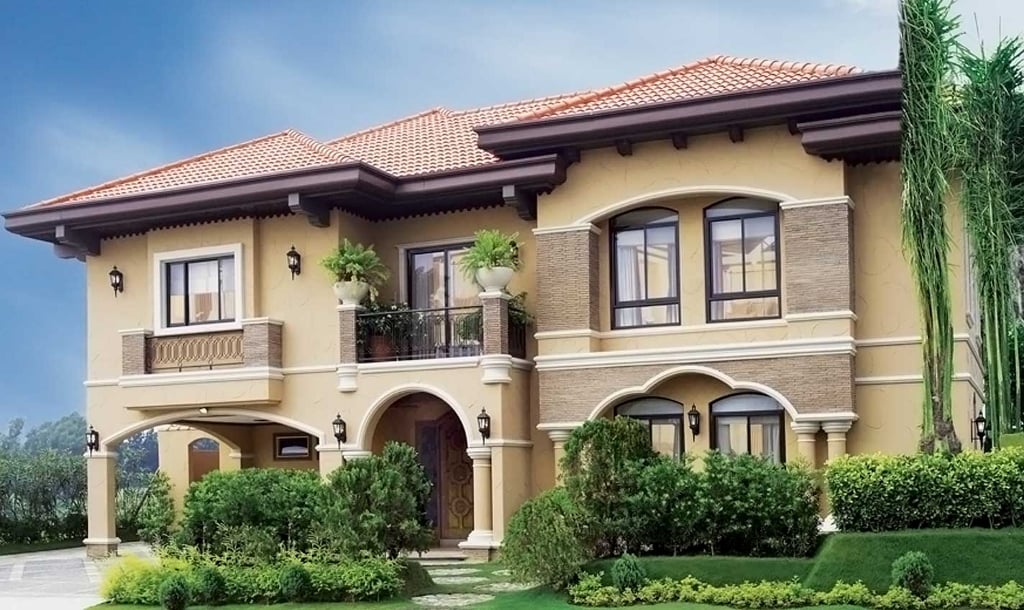
Investment Property
Investment properties, in particular, are a prime example of the advantages of property value increase over time. These properties are acquired with the primary purpose of generating rental income or capital gains.
When property investors purchase an investment property, they expect that its value will increase over the years, allowing them to sell it at a profit or enjoy higher rental income.
Property Developers
The role of property developers is pivotal in the real estate sector. Property developers are responsible for transforming raw land or existing structures into valuable assets. Their decisions and actions have a direct impact on property values within a given area.
A successful real estate development project can significantly enhance the value of neighboring properties. This phenomenon, known as the “spillover effect,” demonstrates the interconnected nature of real estate values in a particular locality.
For property developers, the challenge lies in identifying opportunities for real estate development that align with market demand.
The Importance of Time in Property Value Increase
Timing is crucial, as the real estate market is subject to cyclical fluctuations. Investing in a property development project during a downturn in the market can be risky, as it may take several years for the project to reach completion and for property values to appreciate.
Inflation and the Economy
One of the intriguing aspects of property value increase is that it often occurs even when the property owner makes no significant improvements or investments in the property. The passive appreciation is primarily driven by external factors, such as inflation and the overall growth of the economy.
Inflation erodes the purchasing power of currency over time, causing the nominal value of assets, including real estate, to increase. Property owners benefit from this phenomenon as their property values rise in tandem with inflation, preserving and potentially increasing their wealth.
Moreover, the real estate market is inherently cyclical, experiencing periods of expansion and contraction.
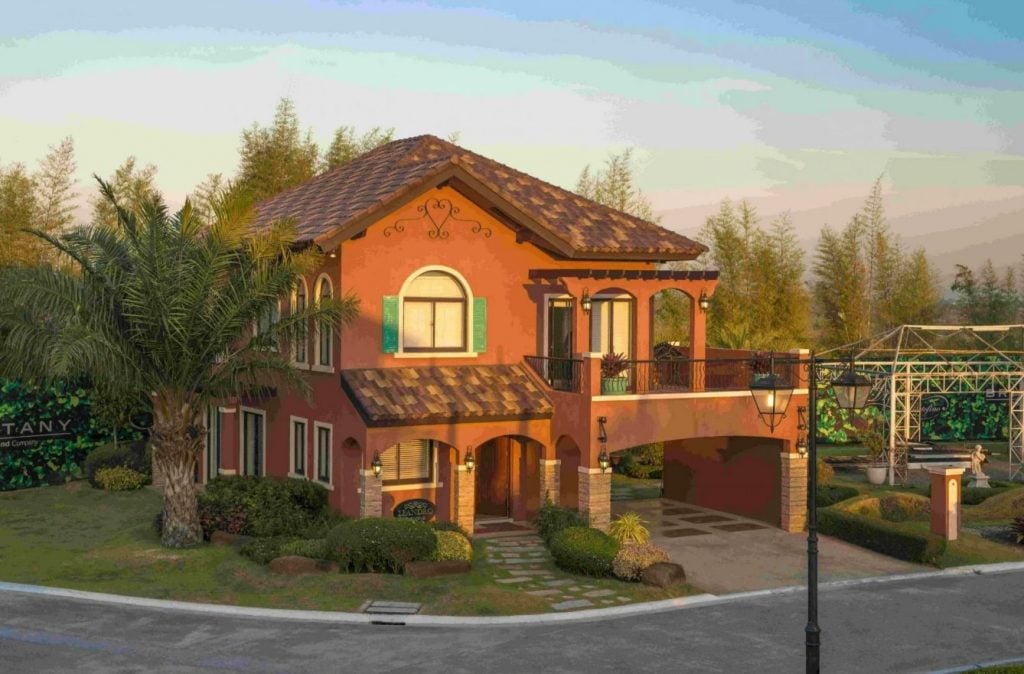
The Risk of Property Investment
During an economic upswing, property values tend to rise due to increased demand, while during downturns, property values may stagnate or decline. However, property owners who hold onto their real estate investments through market fluctuations often benefit from the long-term trend of property value appreciation.
It is essential to acknowledge that property value increase is not guaranteed, and market conditions can vary widely based on location, economic conditions, and other factors. Nevertheless, historical data has shown that, over the long term, real estate values have tended to appreciate, making property ownership an attractive proposition for many.
The Wealth Effect
In recent years, the concept of “aging in place” has gained prominence, with many seniors choosing to remain in their homes rather than moving to retirement communities. This preference is partly driven by the comfort and familiarity of one’s own living space. Over time, property values can provide seniors with a financial safety net, allowing them to tap into the equity built up in their homes to support their retirement needs.
The financial advantages of property value increase also extend to the broader economy. Rising property values create a wealth effect, making homeowners feel more prosperous and confident in their financial situation. This increased confidence often leads to higher consumer spending, which, in turn, stimulates economic growth.
Other ways to Increase a Property’s Value
In the realm of real estate investing, property investors actively seek opportunities to capitalize on property value appreciation. These investors often employ various strategies to enhance the value of their investment properties.
Renovation and Property Improvement Projects
The resale value of a property is the amount for which it can be sold in the open market. Property owners and investors alike are keenly interested in maximizing resale value, as it directly impacts their potential return on investment. A well-maintained, upgraded property is likely to command a higher resale value compared to a property in disrepair.
In addition to renovation and maintenance efforts, property investors may explore other strategies to boost resale value. For instance, investing in energy-efficient upgrades can make a property more appealing to environmentally conscious buyers and may command a premium price. Similarly, improving curb appeal through landscaping or enhancing the interior with modern amenities can make a property stand out in the competitive real estate market.
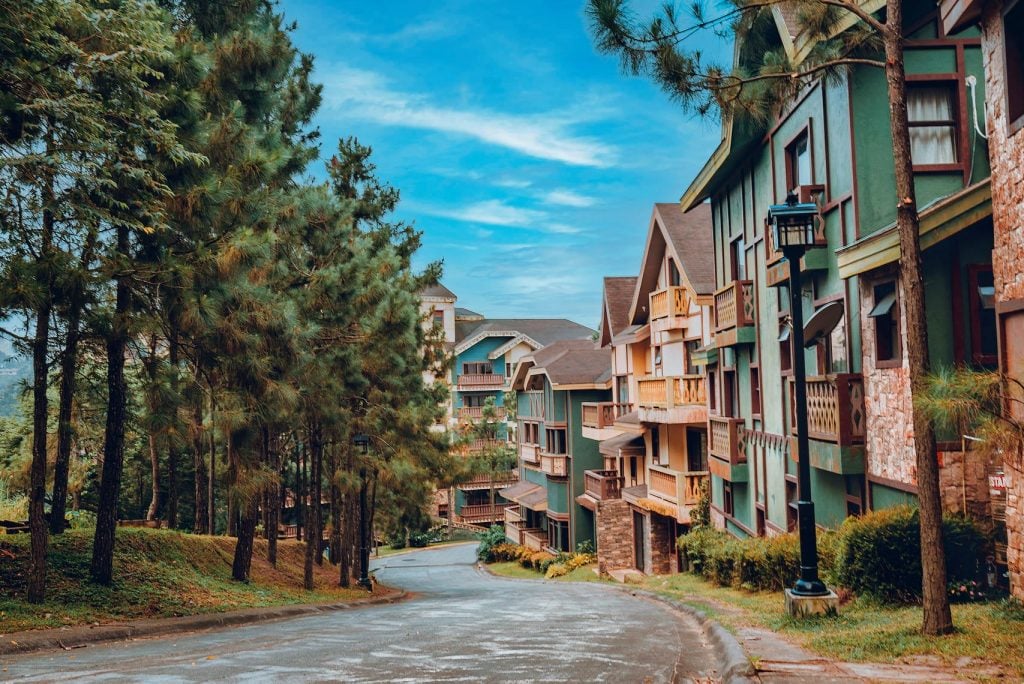
Location
Another aspect that property investors consider is the potential for property value appreciation in a specific location. Properties in neighborhoods experiencing gentrification or urban renewal are often targeted by investors, as these areas have a higher likelihood of experiencing significant value appreciation over time.
The advantages of property value increase over time extend beyond financial gains. Real estate properties provide not only financial security but also a sense of stability and belonging. Homeownership, in particular, is deeply rooted in the aspirations of many individuals and families. Owning a home provides a place to build a life, create memories, and establish roots within a community.
The emotional and psychological benefits of homeownership should not be underestimated. It fosters a sense of pride and achievement, as individuals work toward the goal of owning a property. Furthermore, property owners often feel a greater connection to their communities, as they have a vested interest in the well-being of their neighborhoods.
Suggested Read: Portofino Alabang Sees Strong Price Appreciation
Suggested Read: The Best Time To Invest in a Luxury House? Now!
Suggested Read: Why Value Appreciation Attracts Investors
Suggested Read: 9 Factors Affecting Value Appreciation
Suggested Read: Santa Rosa Land Appreciation 2022
Water heaters are essential electrical appliances that provide us with hot water for daily use. Learn more about water heater installation costs here.
Water heaters are indispensable appliances in modern households, providing the convenience of immediate hot water for various daily tasks. As such, the decision to replace or upgrade your hot water heater is essential for comfort and, more importantly, for the overall efficiency of your home.
Why Water Heater Upgrades Are Crucial
Over time, as water heaters age, they can gradually lose efficiency due to natural wear and tear, sediment accumulation, and outdated technology. This decline in efficiency can result in a heater’s inability to provide the desired hot water instantly, leading to frustration and potentially higher energy costs.
By recognizing the signs indicating the need for an upgrade and understanding the importance of modernizing, homeowners can guarantee a consistent and reliable hot water supply while optimizing their utility costs and reducing their environmental impact. It’s a win-win situation!
Delving Deeper into the Average Cost Breakdown
The cost of installing a water heater can differ considerably, influenced largely by the type and model of the heater chosen. To provide a clearer perspective on these costs, let’s delve deeper into each type, exploring their operational methodology and associated price tags.
Basic Tank Water Heater
Cost: Typically ranging from $600 to $1,100, including installation.
These classic models are powered by electricity or gas and are common in most homes. Their primary design comprises a sizable tank, continuously storing and heating water to ensure it’s always ready for use. While their reliability is unmatched, they may consume more energy because they constantly heat the water.
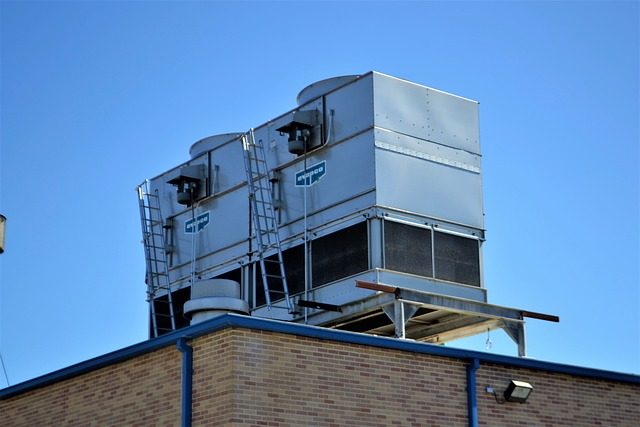
Tankless Water Heaters
Cost: Prices for these models, inclusive of installation, usually hover between $900 and $1,200.
Known for their on-demand heating capabilities, tankless models warm up the water as it flows through the unit. This on-the-spot heating system negates the need for a storage tank, cutting down on energy wastage inherent in keeping water perpetually hot. They’re versatile, too, with powering options that include electricity, propane, or natural gas.
Hybrid (Heat Pump) Water Heaters
Cost: Generally, installation-inclusive prices for hybrid models range from $1,000 to $4,000.
Using cutting-edge technology, hybrid gas water heaters exploit the heat from the surrounding environment, transferring it to warm up the water. They are notably energy-efficient since they primarily rely on heat transfer rather than outright heat generation. They shine especially in regions with warmer ambient temperatures, where their efficiency is further enhanced.
Solar Water Heaters
Cost: Installation inclusive, solar water heaters often cost between $2,000 and $5,000.
Leading the charge in sustainability, solar water heaters employ solar panels to capture and convert sunlight into thermal energy, which is then used to heat water. Though the upfront heater installation costs can be somewhat hefty, several federal and state incentives can be availed to offset these expenses. Over the long run, the significant reduction in energy bills and the minimized carbon footprint make them a worthy investment.
Extended Factors Impacting Cost
Beyond the apparent factors like type, size, and energy efficiency, several underlying aspects can significantly influence the overall costs of water heaters. Let’s take a more detailed look:
Warranty
Additional Cost: Depending on the duration and terms, extended warranties can add anywhere from $50 to $300 to the unit’s base price.
A comprehensive warranty can be seen as a safety net for your investment. Many top-tier models offer extended warranties, reflecting the manufacturer’s confidence in the product’s durability. While this might elevate the upfront costs, it can prove financially prudent in the long run, saving you from potential high repair or replacement expenses from unexpected malfunctions.
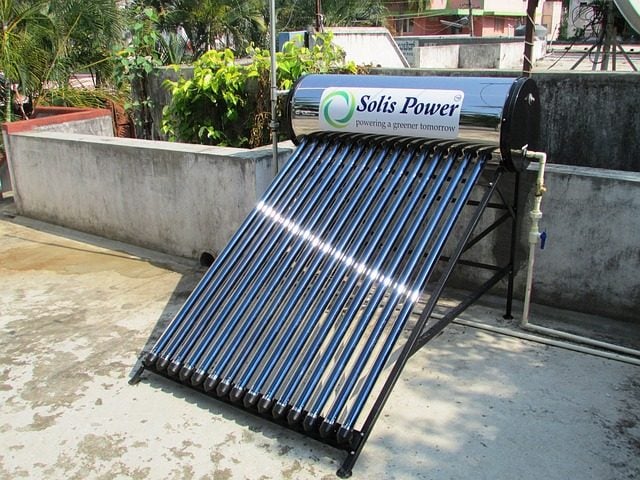
Brands and Models
Price Variation: Established brands and their high-end models can be priced between $100 to $500 more than their lesser-known counterparts.
Similar to other household appliances, the brand name attached to a water heater often carries weight. Renowned brands, with their longstanding reputation, often command a premium. While the initial price may be higher, this is usually a testament to the unit’s reliability, longevity, and the brand’s commitment to superior post-sales service. Investing in such brands can mean fewer breakdowns, a longer lifespan, and the peace of mind of knowing a reputable company backs you.
A Closer Look at Labor Costs
Although we’ve given a general idea of labor costs, it’s crucial to understand that various elements can influence these figures. Let’s break down some of these more intricate factors:
Experience of the Installer
Price Variation: Engaging an experienced professional might increase labor costs by $50 to $200 compared to hiring someone newer to the trade.
Opting for a seasoned installer can often translate to higher labor fees. However, their vast experience can ensure that the installation process is seamless, swift, and devoid of rookie mistakes. While it might be tempting to go with a less expensive novice, the peace of mind and potential longevity offered by an expert could very well justify the added expenditure.
Location
Cost Differential: Labor costs can vary significantly by region, sometimes by as much as $100 to $400. Typically, metropolitan areas or locations with a higher standard of living can come with steeper charges.
Your geographical location can be a considerable influencer when it comes to labor costs. Areas with higher operational expenses or elevated living standards might naturally come with heftier service fees. It’s always advisable to gauge the average local rates before committing to ensure you’re getting a fair deal.
Additional Components
Additional Expenditure: Incorporating specialized components can hike up the labor costs by around $50 to $300, depending on the complexity and the components used.
Certain water heater models might necessitate the inclusion of added elements like circulation pumps, specialized valves, or even advanced thermostatic controls. While these components might enhance the unit’s efficiency or safety, they can also add layers of complexity to the installation process, thereby increasing labor charges.

How Much Do Tank and Tankless Water Heaters Cost to Install?
Understanding the cost difference between tank and tankless water heaters is essential in making an informed decision. Both have their unique set of advantages and disadvantages, and the better choice largely depends on individual needs and preferences.
Costs With Installation
Tank Water Heaters: $600 to $1,100
Tankless Water Heaters: $900 to $1,200
Tank Water Heater
A tank water heater stores a specific volume of water and consistently maintains it at the desired temperature. It’s continuously operational, ensuring warm water is always on standby. Such a system might be preferable for households with multiple members or those living in medium to large homes. Particularly when water is simultaneously required in different parts of the home, a tank system proves more beneficial.
However, while the initial cost might be lower, the operational costs over time can be higher due to its continuous energy consumption.
Pros
- More affordable initial cost compared to tankless water heaters.
- Efficiently handles high-demand use.
- Installation is relatively straightforward and can be completed in about three hours.
Cons
- Continuous energy usage leads to higher utility bills.
- Has a shorter lifespan, averaging between 10 to 12 years.
- Requires more space due to the size of the tank.
The average price range for tank water heaters, excluding installation, is approximately $400 to $780.
Tankless Water Heater
Unlike its tank counterpart, the tankless water heater is designed to heat water on demand. Instead of maintaining a reservoir of warm water, it quickly heats the water as it flows through the system. This results in reduced energy consumption since it’s only operational when hot water is required. While the initial investment is higher, the potential savings in energy bills over time can offset the upfront costs.
Pros
- Consumes energy only when hot water is required, potentially saving utility bills.
- Longer lifespan, often exceeding 20 years with proper maintenance.
- Compact design saves space.
Cons
- Higher initial cost.
- Might not handle simultaneous demands in larger households as efficiently.
- Installation can be more complex, sometimes requiring modifications to existing infrastructure.
Final Thoughts
A water heater is more than just an appliance; it invests in consistent comfort. As with any significant investment, homeowners should approach this with research and foresight. By understanding the intricate details of costs, benefits, and potential pitfalls, you ensure that the warmth of your showers is matched only by the satisfaction of a well-made decision.
After ensuring the comfort of your home with the perfect water heater, isn’t it time to elevate your lifestyle further? Dive into the world of luxury real estate with Brittany Corporation, the Philippines’ leading name in opulent living spaces. Experience sophistication, elegance, and a touch of paradise with every property. Connect with Brittany Corporation today and discover your dream home in the heart of the Philippines!
Suggested Read: Sustainability in Glass Houses: Reducing Energy Costs in the Summer
Suggested Read: Solar Panels in the Philippines: Price and Installation Process
Suggested Read: Choosing The Perfect Water Heater For Your Condo
Suggested Read: Siding Installation Cost: An In-Depth Guide
Suggested Read: Scuba Diving 101: In The Know
Junk removal, offered by a myriad of junk removal companies, has emerged as an indispensable service that plays a pivotal role in maintaining clean and clutter-free living and working spaces.
This essential service entails the efficient and responsible removal of unwanted items, yard debris, and waste materials from homes, offices, construction sites, and more.
With its many benefits, junk removal not only facilitates an organized and aesthetically pleasing environment but also contributes to environmental sustainability.
Understanding Junk Removal Services
Junk removal companies are at the forefront of addressing the burgeoning need for decluttering and waste disposal.
These professionals are equipped to handle a wide array of tasks, from clearing out old furniture and broken appliances to disposing of construction debris and hazardous materials.
Their services extend far beyond mere just trash removal services, encompassing the safe and eco-conscious disposal of various items.
Junk Removal Costs
One of the foremost queries individuals have when contemplating the utilization of junk removal services pertains to the associated cost.
As a rule of thumb, the typical price for junk removal hovers around 11,380 pesos, equivalent to approximately $200.
Nevertheless, it is pivotal to recognize that the ultimate expenditure for junk removal tasks is rather dynamic, encompassing a spectrum that starts at approximately 5,690 pesos and can escalate to the 17,070 pesos mark or even ascend beyond 39,830 pesos for intricate undertakings.
The total financial outlay of your particular project is contingent on multiple factors, including the type of debris or refuse you need to be removed, the volume thereof, and the labor expenses applicable to your geographical locale.
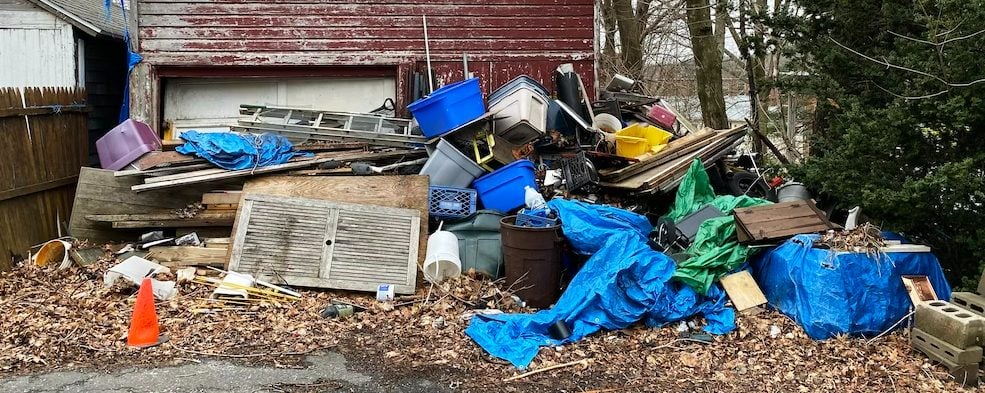
What is the financial outlay of procuring junk removal services?
This inquiry frequently arises when confronted with the necessity of disposing of excess waste, unwieldy items, or hazardous materials that cannot be casually discarded in the conventional trash receptacle.
Whether you are in the process of relocating or have recently hosted a large-scale event, the valuable assistance of a junk removal service provider becomes indispensable.
While we heavily rely on our routine residential garbage and recycling services, it is crucial to appreciate their limitations.
They are ill-equipped to accommodate every conceivable disposal requirement, hence the impracticality of expecting typical waste collectors to retrieve a discarded couch from your sidewalk.
When dealing with the removal of furniture, mattresses, appliances, electronics, or other weighty items, it becomes apparent that the prudent course of action is to enlist the services of a professional rubbish removal firm.
Assessment of Varying Disposal Costs
The cost of junk removal exhibits a degree of variability contingent on the nature of the items earmarked for disposal.
Certain categories of refuse, especially those of substantial bulk or containing potential hazards, command a higher price tag due to the complexities associated with their proper elimination.
Pricing structures are subject to differentiation among companies; some may determine charges based on weight and labor hours expended, while others might adopt a fixed-rate approach for specific item classifications, such as furniture or construction waste.
Consequently, it is judicious to initiate a preliminary dialogue with your chosen junk removal service provider to ascertain their pricing methodology.
Financial Implications of Furniture Removal
The disposal of furniture is often accompanied by a notable financial outlay, chiefly attributable to the inherent weight and unwieldiness of such items.
The junk and trash removal cost and costs of most cumbersome items generally translates to an expenditure ranging from 3,983 to 8,535 pesos, subject to variables such as weight and regional pricing disparities.
Sofa Disposal: 5,131 to 8,535 pesos
Entertainment Center Disposal: 5,131 to 11,380 pesos
Comprehensive Cost Assessment for Various Junk Categories:
In addition to furniture, numerous other objects surpass the dimensional constraints of a standard trash receptacle.
Take note of the junk removal prices.
It is important to underscore that smaller electronic waste devices often entail a more budget-friendly disposal process in comparison to their larger counterparts, such as mattresses.
TV Disposal: 3,983 to 5,131 pesos
Mattress Disposal: 3,983 to 5,411 pesos
Exercise Machine Disposal: 5,411 to 11,380 pesos
Hot Tub Disposal: 11,380 to 17,070 pesos

Evaluating the Expenses for Appliance Removal
It is important to take note of junk removal pricing.
The disposal of appliances like washers and refrigerators typically engenders a higher financial commitment, particularly when they contain freon—a noxious substance necessitating specialized disposal to forestall soil contamination in landfills.
Washer Disposal: 3,983 to 5,411 pesos
Refrigerator Disposal: 5,411 to 8,535 pesos
Cumulative Pricing Considerations
In the event that you necessitate the disposal of multiple items, the associated costs have the potential to accumulate considerably.
However, it is possible to mitigate expenses by ensuring that your items are readily accessible for removal.
It is imperative to recognize that if contractors are required to navigate obstacles, such as stairs, during the retrieval process, this may exert an upward pressure on labor costs.
Exploring Recycling Options for Bulky Items and Other Waste
Even when confronted with the disposal of sizeable articles such as furniture and appliances, recycling remains a viable avenue.
While it is crucial to understand that recycling does not entail the mere act of placing these items next to your regular recycling bin and hoping for the best, it does signify the feasibility of engaging a trash removal company committed to environmentally responsible practices.
Indeed, the role of a junk removal company is important. There are also junk removal specialists.
Make sure to take note of your local junk removal companies.
Numerous items possess the inherent potential to be disassembled into constituent materials amenable to recycling, such as scrap metal.
In order to ensure that your waste does not undergo direct disposal in a landfill, it is advisable to inquire with your local junk-hauling company regarding their recycling protocols.
Quantifying the Cost of Hazardous-Waste Disposal
Distinguishing itself from conventional junk removal, hazardous-waste disposal revolves around the elimination of substances or objects that pose threats to both the environment and human health.
The purview of hazardous materials encompasses entities such as latex paint, fluorescent lighting fixtures containing mercury, asbestos, and propane tanks.
The cost dynamics of waste disposal of this nature hinge on factors like the specific substance or item in question, with pricing structures often predicated on weight.
As an illustrative example, the disposal of latex paint typically incurs a cost in the vicinity of 569 pesos per gallon.

It is essential to recognize that not all junk removal companies entertain the acceptance of hazardous materials.
Consequently, the imperative dictates that you establish contact with a specialized company duly equipped for the safe disposal of toxic substances.
Moreover, it is imperative that hazardous materials remain segregated from conventional waste slated for landfill deposition, thereby averting the dissemination of perilous chemicals into the environment’s realms—air, water, and land.
An alternative recourse would be to liaise with your local waste management authority for guidance on the proper disposal protocols for materials you deem potentially hazardous.
Exploring the Economics of Dumpster Rentals
In scenarios where projects extend over multiple days or necessitate several hours of dedicated labor, the prospect of dumpster rental emerges as an economically prudent choice.
Typically, the rental of a dumpster and the associated garbage disposal costs coalesce within the bracket of 19,330 to 39,830 pesos.
The alternative often proves more cost-effective compared to the engagement of professional removal services for a one-time clearance endeavor.
With a dumpster at your disposal, you are afforded the flexibility to progressively see how much space to dispose of construction debris, yard waste or miscellaneous refuse as your project unfolds.
Upon the culmination of your undertaking, you may opt to have the service provider retrieve the dumpster and oversee trash disposal on your behalf.
Alternatively, you possess the autonomy to transport your refuse to a landfill personally, albeit this course of action may necessitate the payment of disposal fees.
Community and Environmental Impact
Most Junk removal companies often go beyond their core services by contributing to their communities and the environment.
They frequently donate reusable items to charities and non-profit organizations, thereby reducing food waste, and supporting those in need.
The community involvement aligns with their commitment to responsible waste management practices.
Green living in Forresta
Forresta embraces sustainability and green living, ensuring that residents can enjoy an eco-conscious oasis in the heart of Alabang. Crafted by Brittany Corporation, Forresta offers a residential experience that seamlessly blends serenity, elegance, and contemporary living.
Nestled within the sprawling Villar City, an expansive 118-hectare mixed-use estate, Forresta stands as one of the crowning jewels of this visionary creation by real estate luminary Manuel Villar.
With an unwavering commitment to lush gardens, sprawling green spaces, and a promise to plant a million trees, Villar City sets the stage for Forresta’s exceptional ambiance.
Suggested Read: Rise Of Eco-Friendly Resorts And Sustainable Tourism
Suggested Read: Proposed Sustainable Cities And Communities Act
Suggested Read: Guide To Proper Disposal of Compostable Products
Suggested Read: Sustainable Living Tips For Eco-Friendly Home
Suggested Read: Clutter Clearing Plans For The New Year
Sliding glass doors are a great way to add style, functionality, and value to your home. They can also help to reduce your energy bills by letting in natural light and heat, keeping the cool air in during the summer.
If you’re thinking of installing a sliding glass door or replacing an old one, considering the cost is a must, whether it is sliding glass patio doors, automated sliding doors, or any other sort of sliding glass door.
Sliding Glass Door Installation Cost
When you’re considering a sliding glass door installation or replacement, knowing its total cost is essential. The cost of materials like wood frames or metal frames, and the type of glass such as standard, tempered glass, or laminated glass is important to know
The labor cost for the indispensable professional installation guarantees a secure and precise replacement. The size, style, and inclusion of features such as built-in blinds or smart locks can also influence expenses.
The average cost of sliding glass door installation ranges from $1,000 to $1,850. However, high-end projects can cost upward of $2,600.
Factors that Affect the Cost of Sliding Glass Door Installation
By knowing the factors that affect the cost, you can make informed decisions about the size, type, and materials of the door you choose. You can also get multiple estimates from contractors to ensure that you are getting the best possible price.
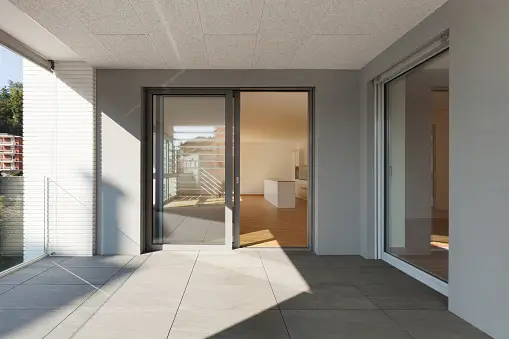
A traditional sliding glass door is typically less expensive to install than a sliding glass patio door or automatic sliding door. Larger or custom-sized frames may require more labor and materials which may cause an increase in the cost. Installing sliding patio doors or automatic sliding doors may also require more intricate work than standard sliding doors, resulting in higher labor costs.
Most sliding glass doors feature tempered glass for safety and durability but variations in glass quality or specialty features can increase the cost.
Installing a new sliding glass door may be more expensive than replacing an existing one, as it may involve additional work to remove the old door and prepare the space for the new installation.
Size of the door
The size of the door is one of the biggest factors that affects the cost of installation. Larger doors require more materials and labor and therefore cost more to install.
Higher-quality doors are made with better materials and construction methods and therefore cost more than lower-quality doors.
Sliding glass doors come in a variety of styles, including single-panel, double-panel, and triple-panel doors. More complex doors, such as triple-panel doors with custom features, will cost more to install.
Labor Costs
Labor costs are another factor that affects the cost of sliding glass door installation. The cost of labor will vary depending on the location of the project and the experience of the contractor.
In general, labor costs account for about 50% of the total cost of installation. The cost of labor to install a sliding glass door typically ranges from $200 to $300, and most jobs take a few hours to complete.
However, rates can vary depending on the complexity of the job and the cost of living in your area. It’s usually a good idea to plan ahead of time and talk about labor costs with your contractor.
Sliding glass door replacement requires a lot of heavy lifting, and you’ll likely need at least a couple of people to help. If you have a patio door already, you’ll also need to have the old door removed and disposed of, which can be tricky on your own.
Labor to remove a door often costs between $75 and $110, and you should ask if your contractor has an extra disposal fee.
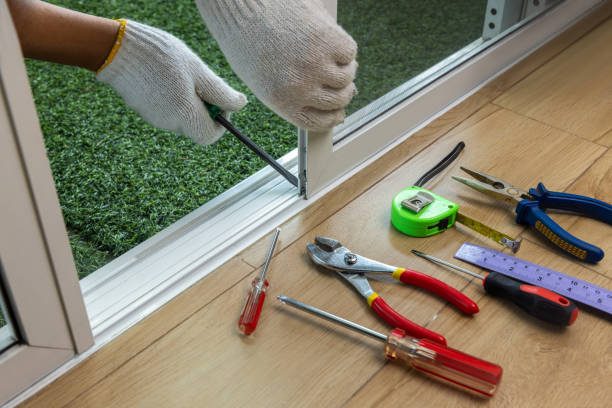
Adding Style and Value to Your Home with Sliding Glass Doors
Sliding glass doors are a popular choice for homeowners who want to improve their home’s energy efficiency, increase natural light, and add value to their property. Sliding glass doors are also a great way to connect your indoor and outdoor living spaces.
When it comes to sliding glass door installation costs, savvy homeowners are always on the lookout for practical tips to save money without compromising on quality. Whether you’re considering sliding glass installation, sliding patio door installation, or even automatic sliding door installation, knowing how to trim your expenses can make a significant difference.
Additional Features
The cost of installing a sliding glass door can be increased by the addition of additional features. These features can include screens, locks, special hardware, pet doors, integrated blinds or shades, and custom finishes. The specific features that are available and the cost of installation will vary depending on the contractor.
When it comes to making decisions about additional features for your property, it’s important to carefully consider the costs and benefits. For instance, if you’re looking at a condo for sale or a condominium in Tagaytay, you should think about whether certain features are necessary based on your specific situation.
If you live in a high-crime area, security enhancements like robust locks or shatterproof glass might be worth the investment for your peace of mind. On the other hand, if you’re in a safe neighborhood like the community in Portofino, or Crosswinds, you might save money by not including these features.
Sliding glass doors are a luxurious and world-class addition to any home. They offer both practical and aesthetic benefits, providing homeowners with an unparalleled living experience.
When you’re on the hunt for a property like a world-class condo for sale or a condominium in Boracay, remember that the inclusion or exclusion of certain luxury features, such as sliding glass doors in luxury places such as luxury house and lot in Tagaytay or luxury lot in Tagaytay can significantly impact the property’s overall value and functionality. This consideration is particularly relevant when evaluating luxury places.

With amenities and a glass sliding door, additional features can help boost one luxury place, such as Brittany Living’s world-class luxury condotel in Boracay. Additional features can enhance your living experience and the property’s appeal. So, take your time to evaluate these features and seek guidance from experts to ensure your choices align with your goals and financial plans.
For homeowners who are looking for a truly luxurious and world-class living experience, Brittany Living offers a variety of luxury places in Boracay or a luxury lot in Tagaytay, including world-class luxury condos for sale and world-class luxury condotels for sale. These world-class properties are designed to provide homeowners with an unparalleled living experience in one of the most beautiful locations in the world.
With stunning views of the houses in a luxury lot in Tagaytay or the crystal-clear waters of Boracay Beach, these world-class condominiums offer the perfect place to relax and unwind.
If you are seeking world-class living, Brittany Living doesn’t only have the most beautiful houses in the Philippines but they also have condo for sale. Brittany Living understands the importance of providing elite sellers with the finest luxury condotels in Boracay and offering Salesforce for realtors and Salesforce for real estate agents to optimize their real estate operations.
With Brittany Living, you have the opportunity to experience world-class living like never before. Choose Brittany, choose a life with comfort.
Suggested Read: Pros and Cons of Condo For Summer Vacation
Suggested Read: Ways To Make Engaging Client Presentations
Suggested Read: Siding Installation Cost: An In-Depth Guide
Suggested Read: A Taste of Italian Living at Portofino
Suggested Read: Vinyl Siding Installation Cost
